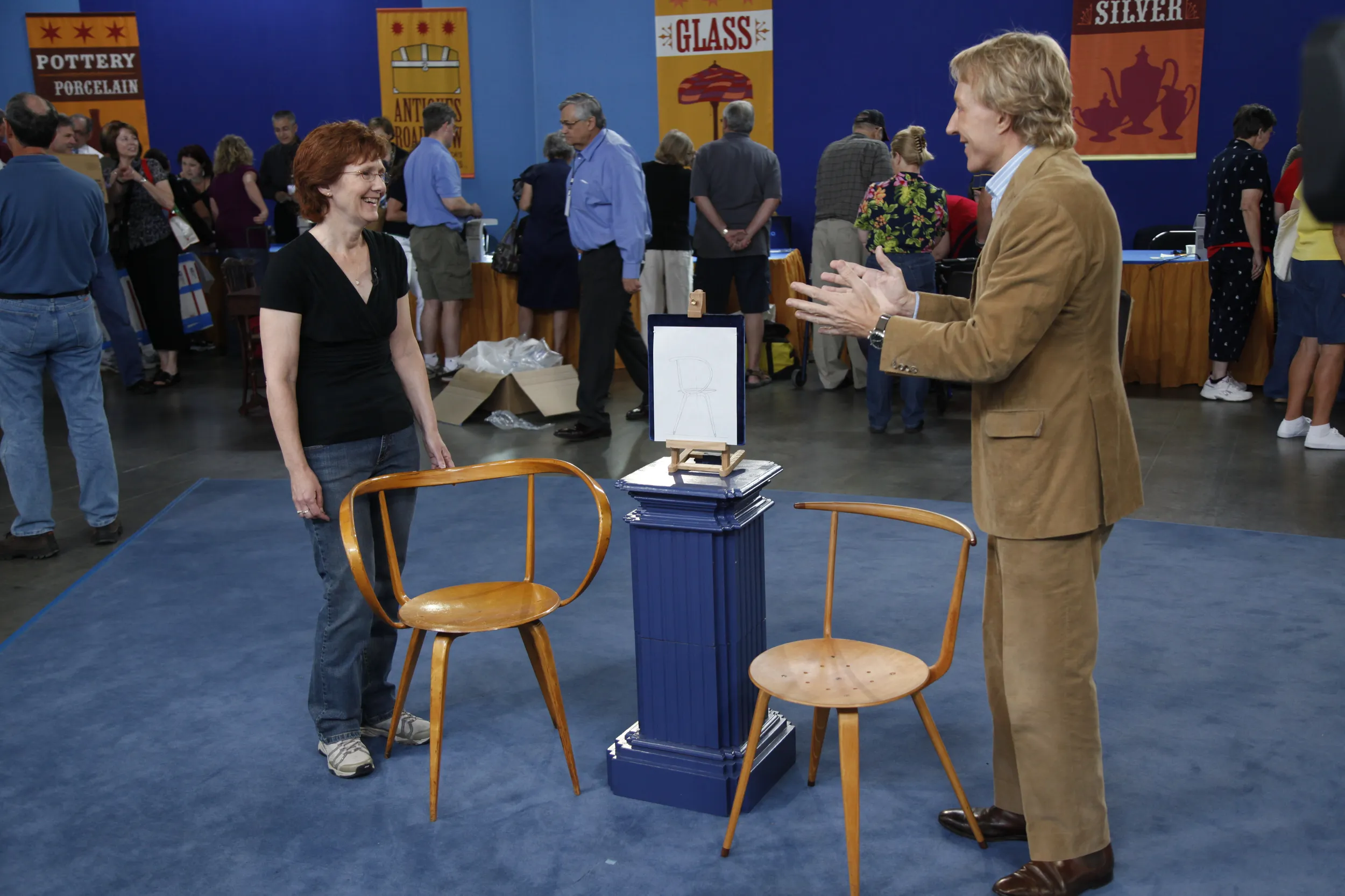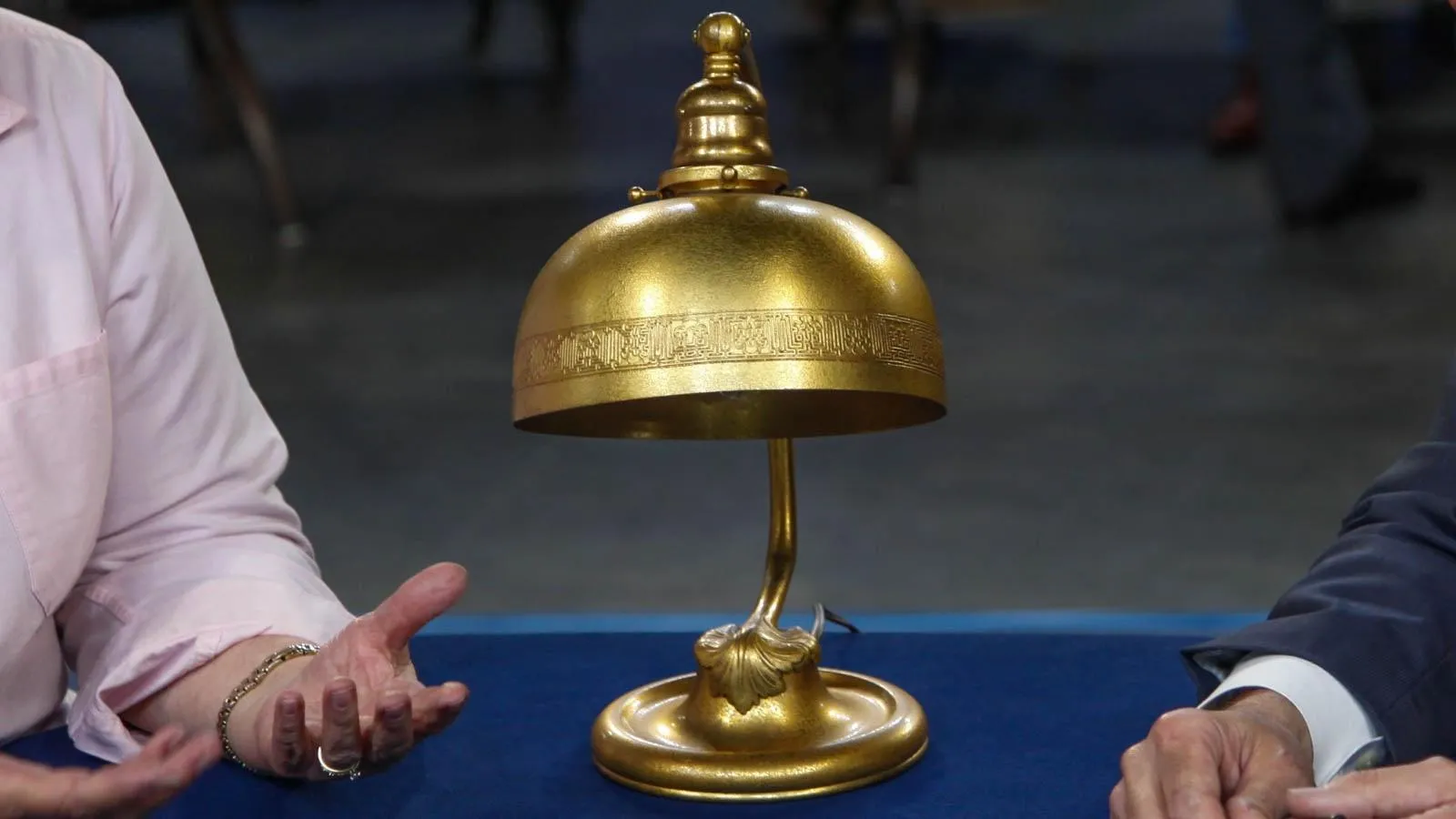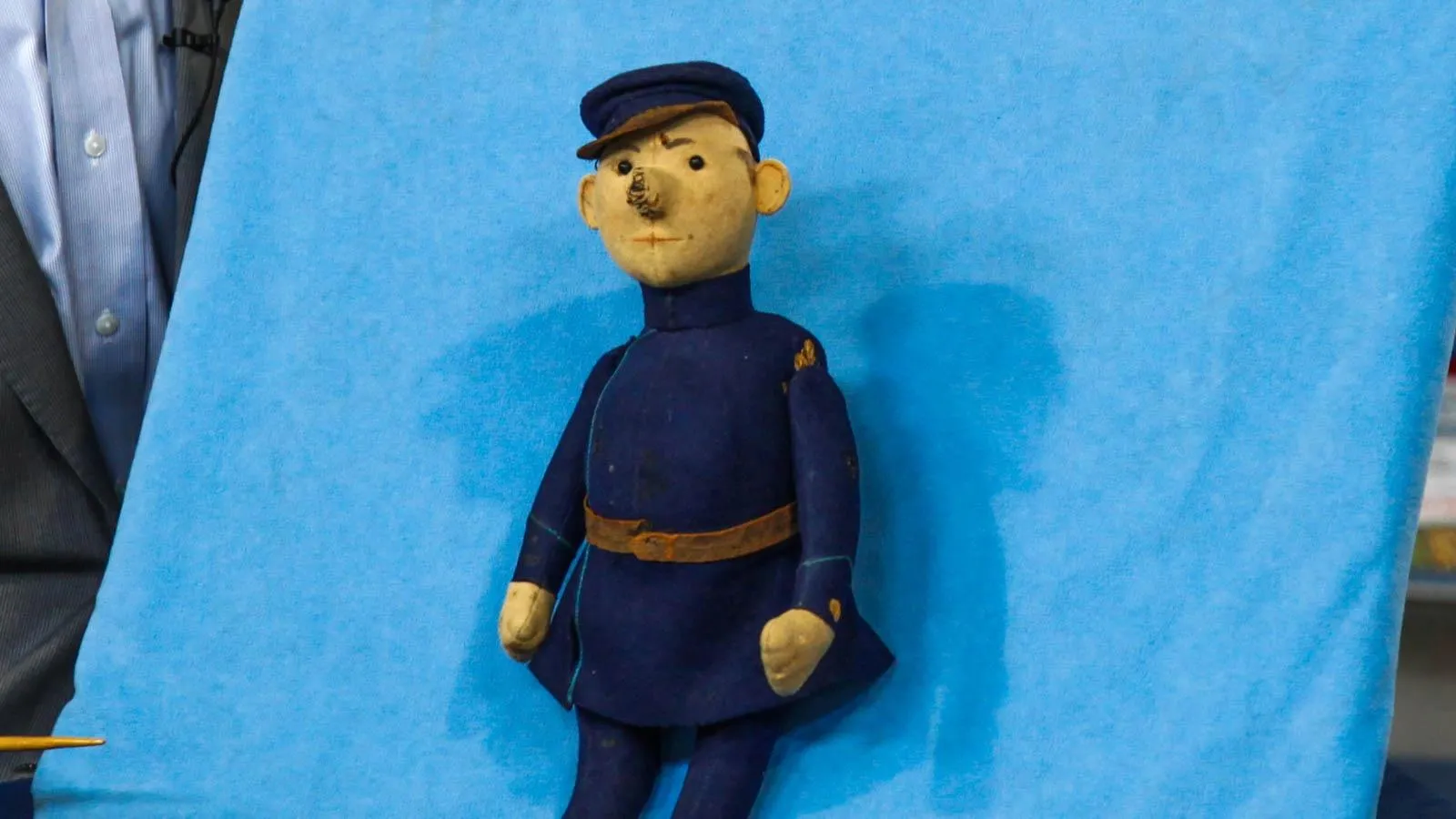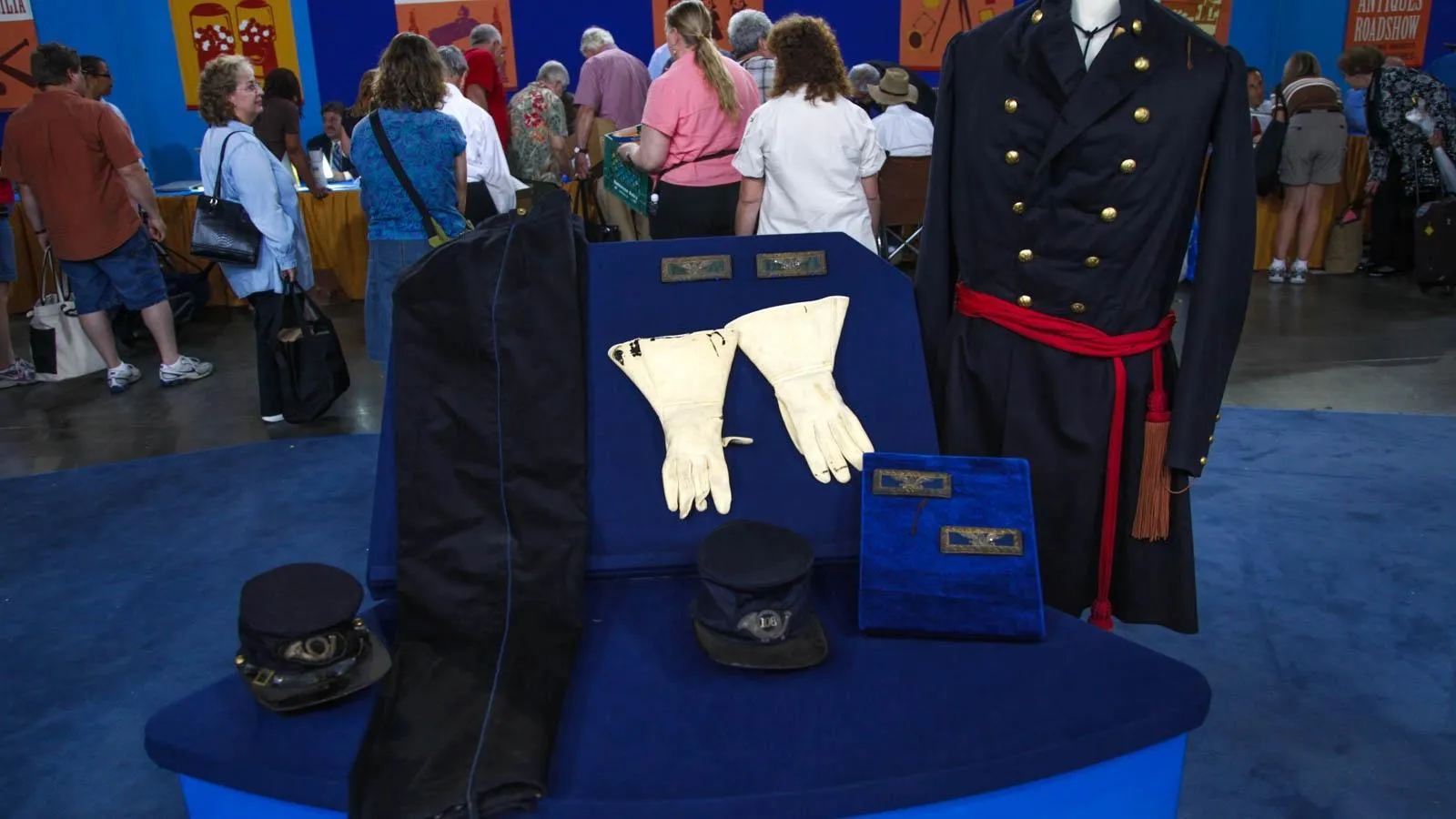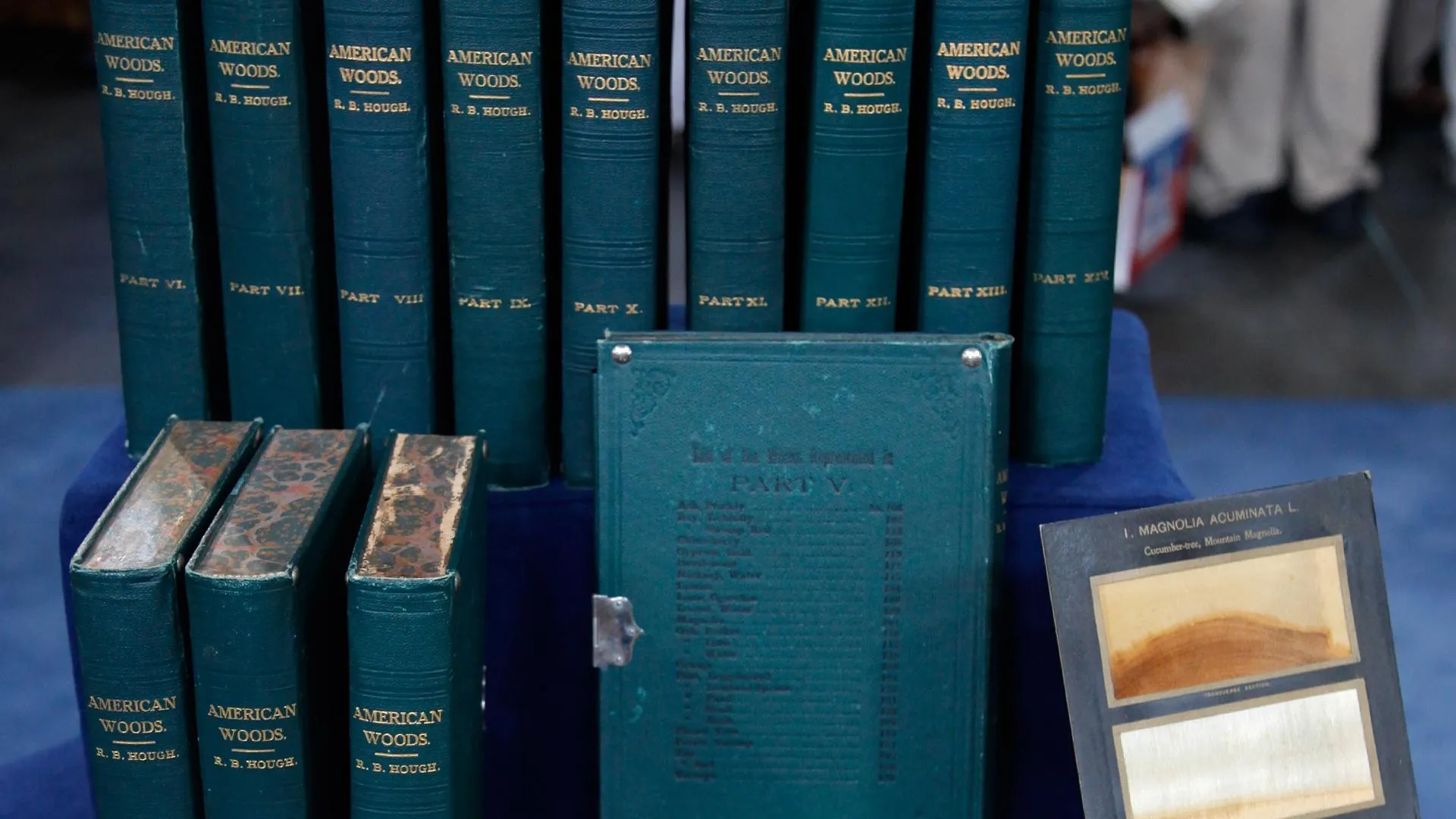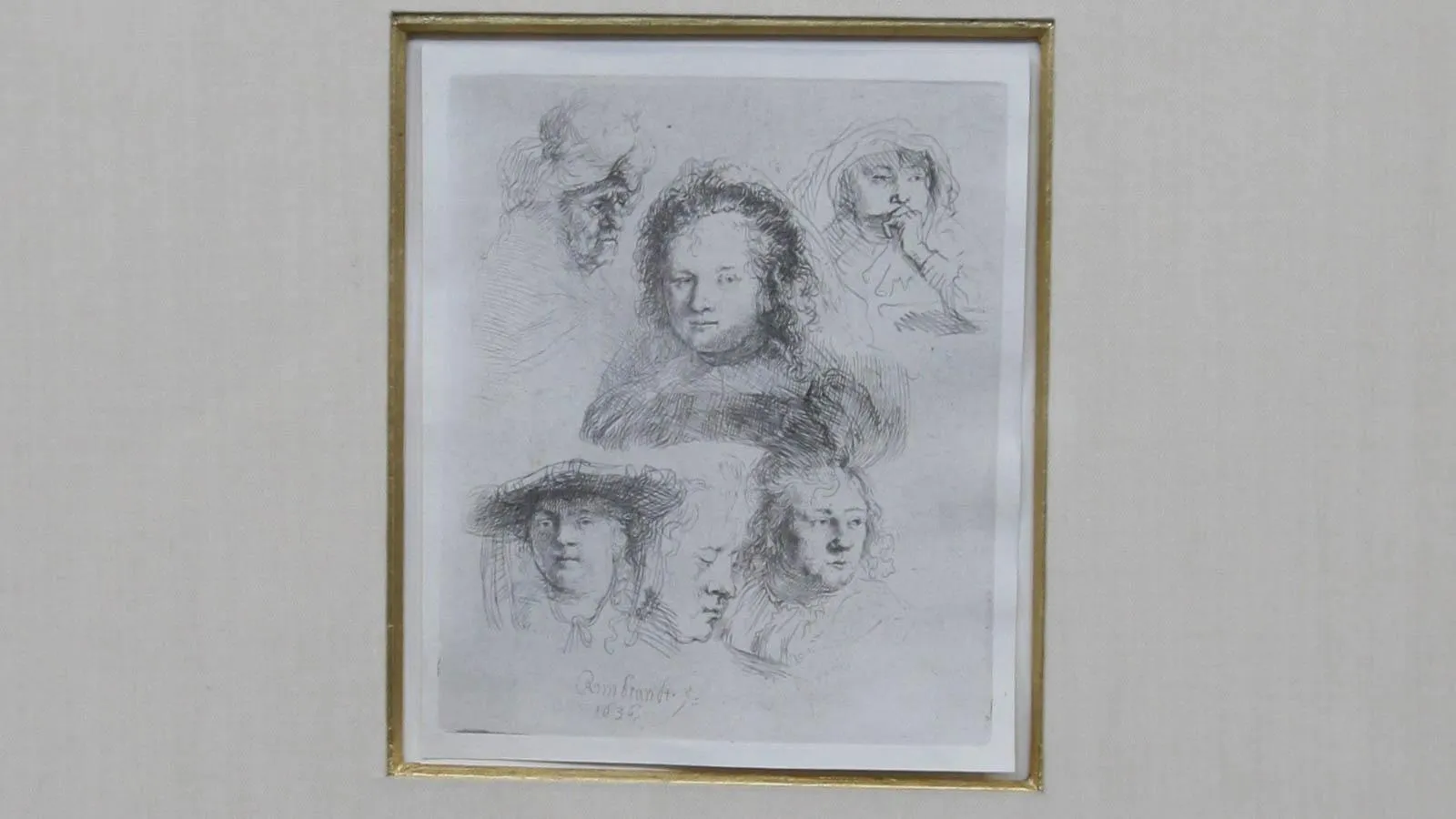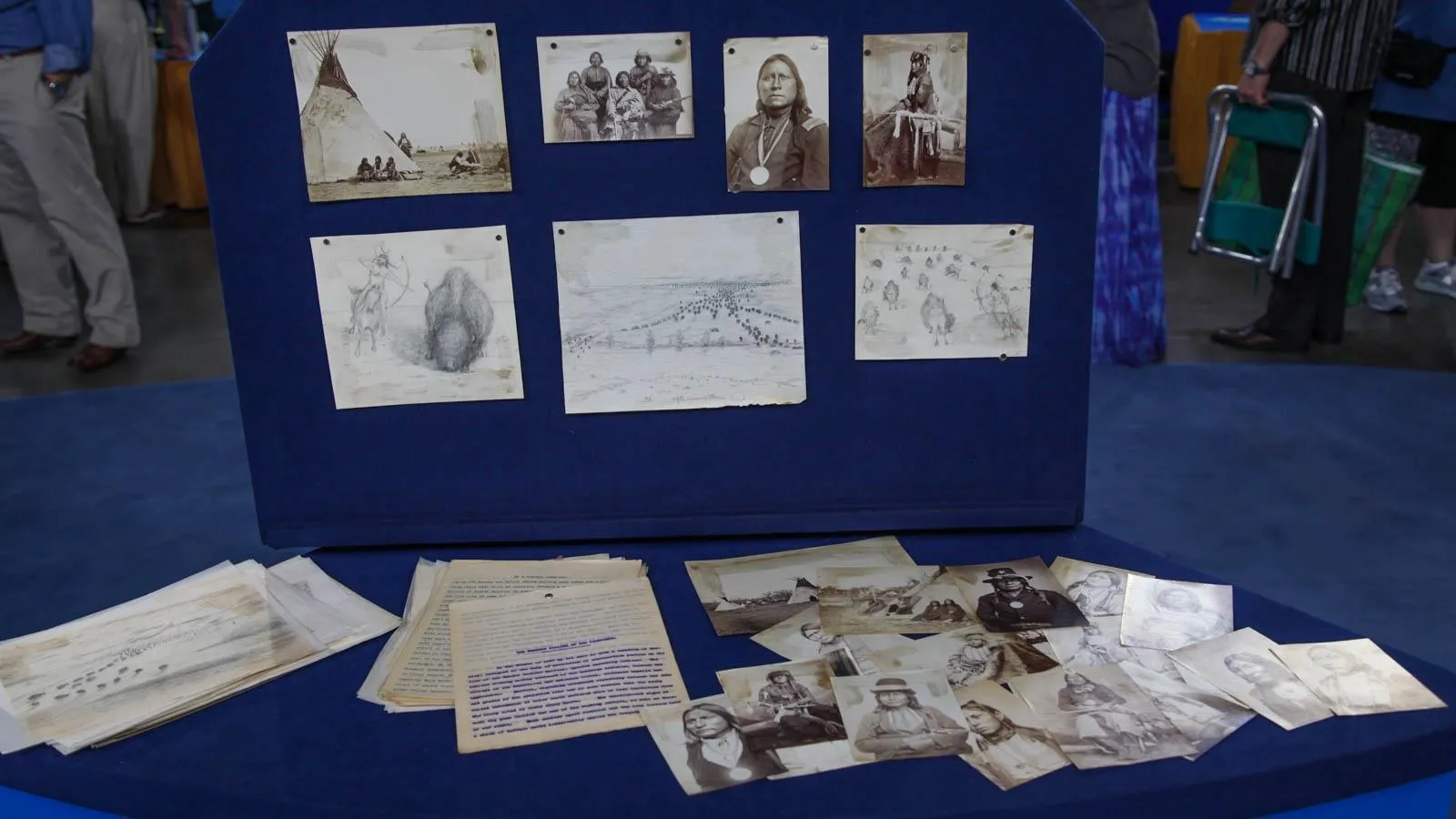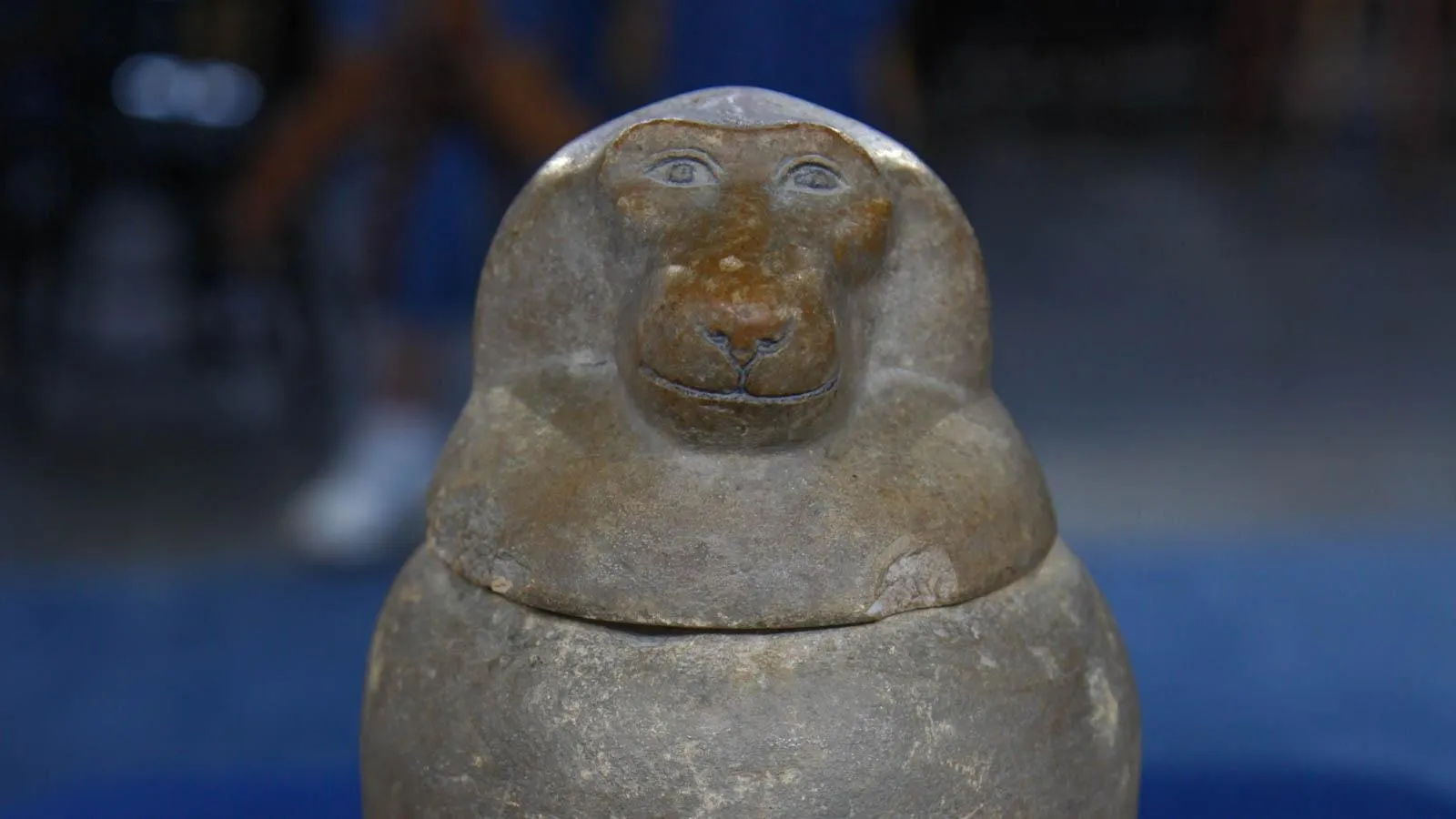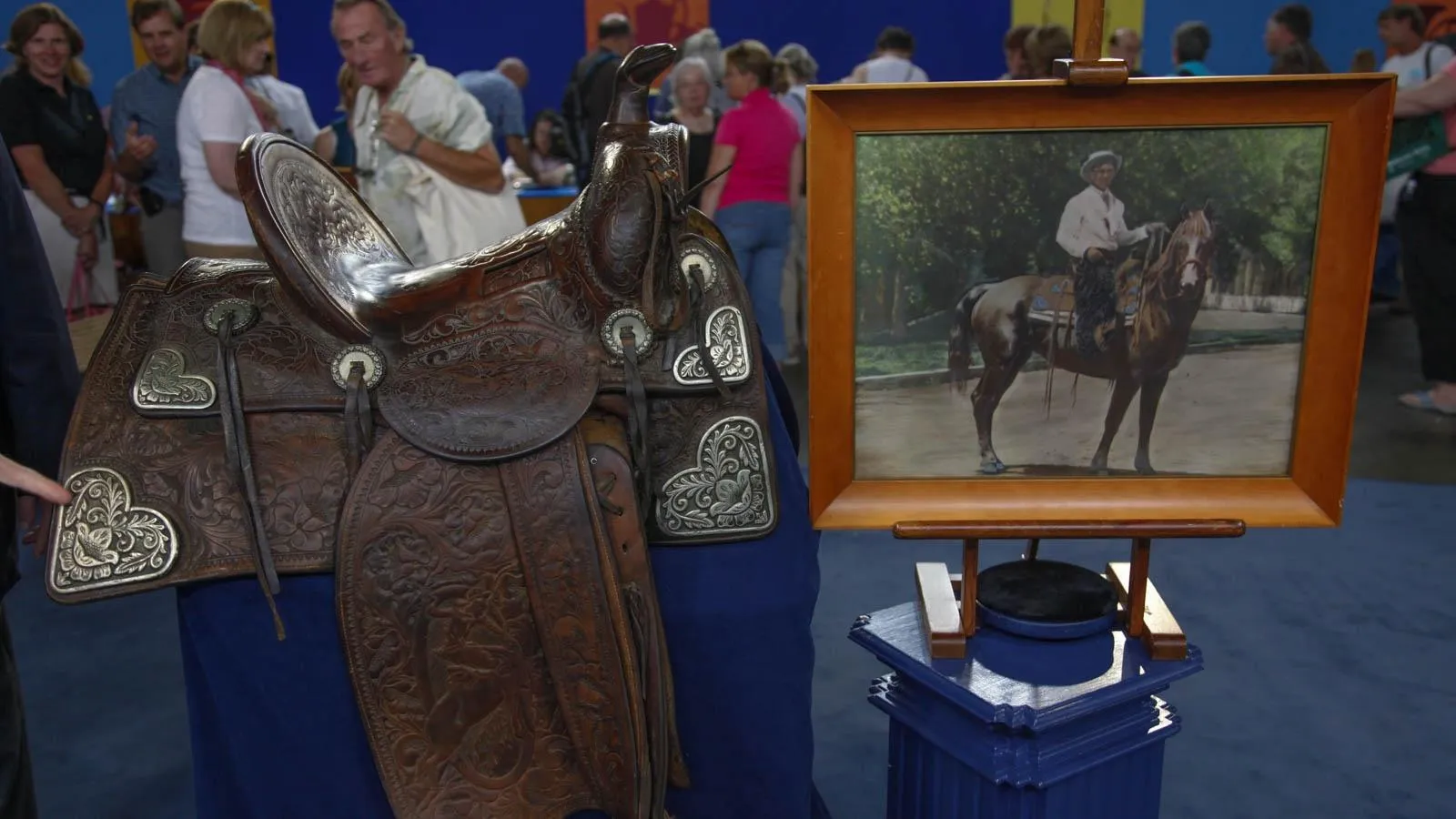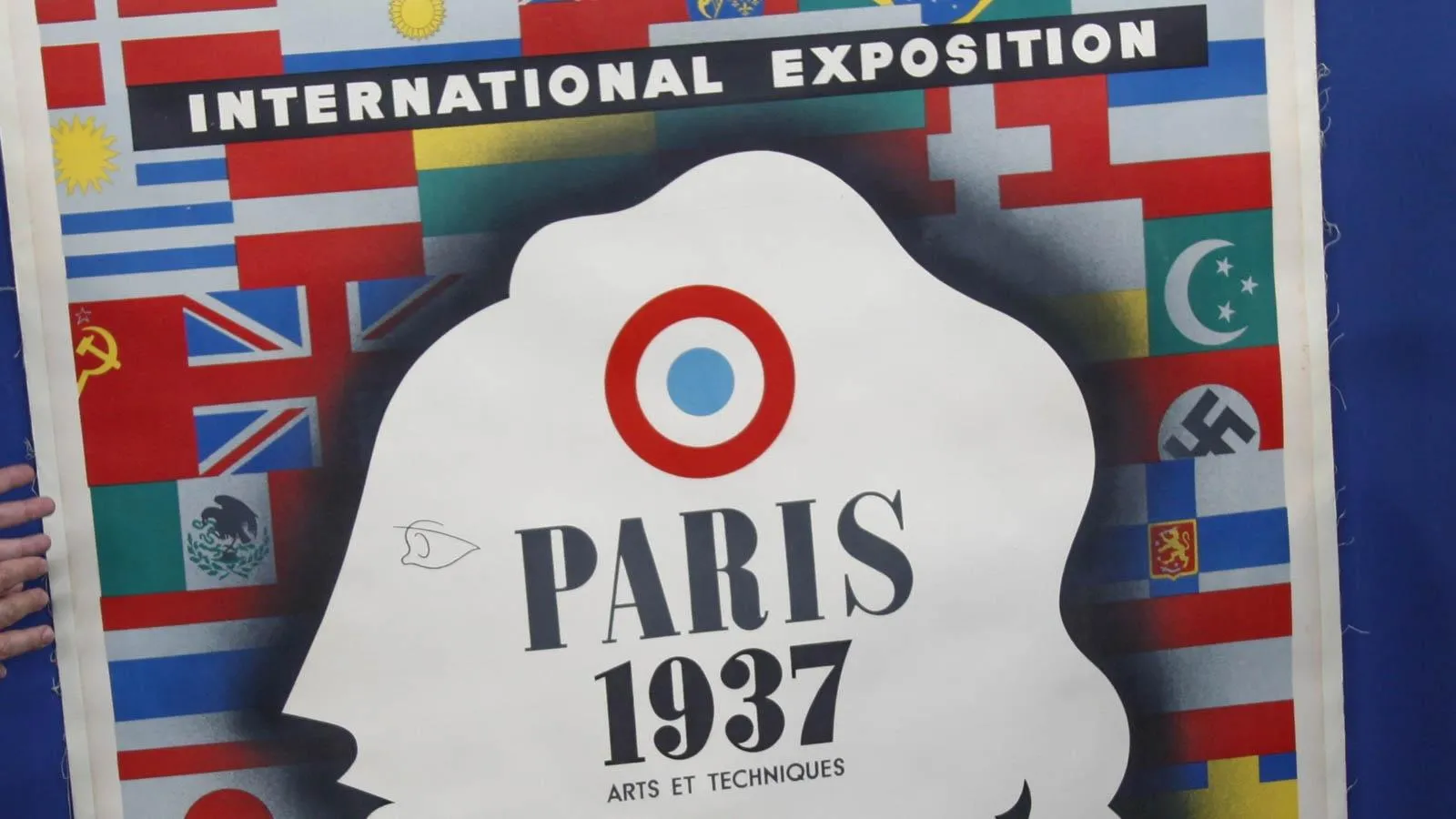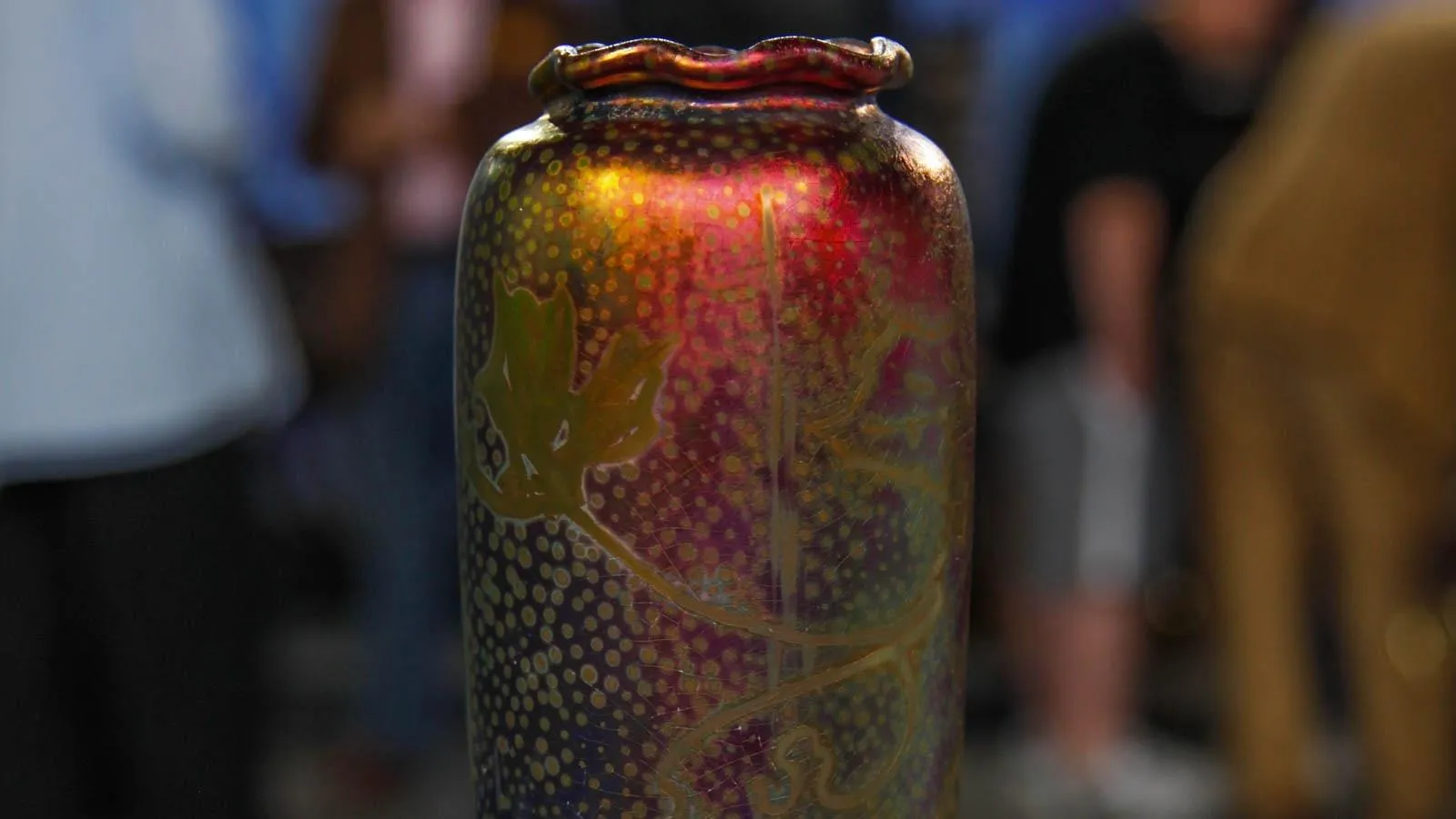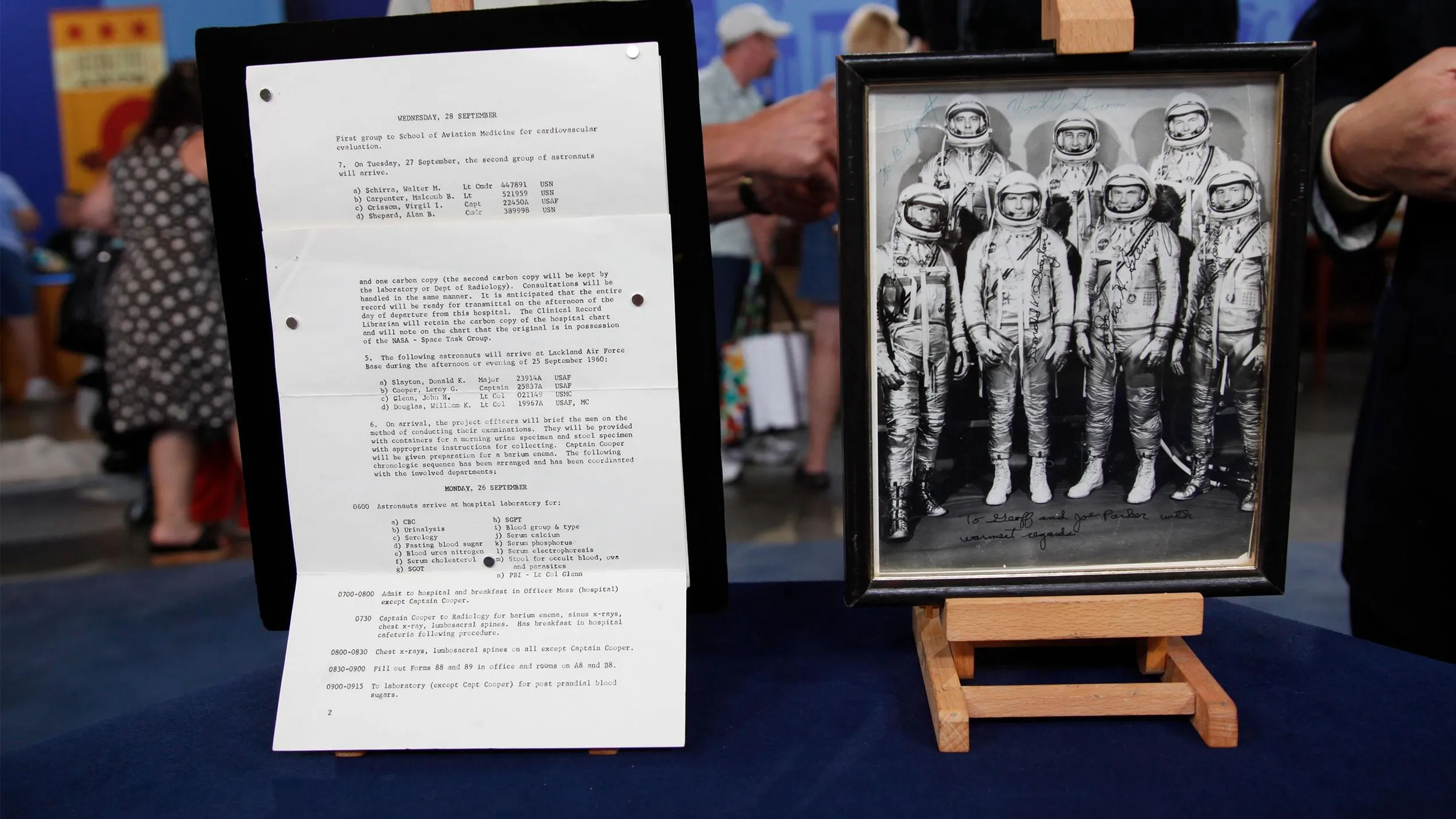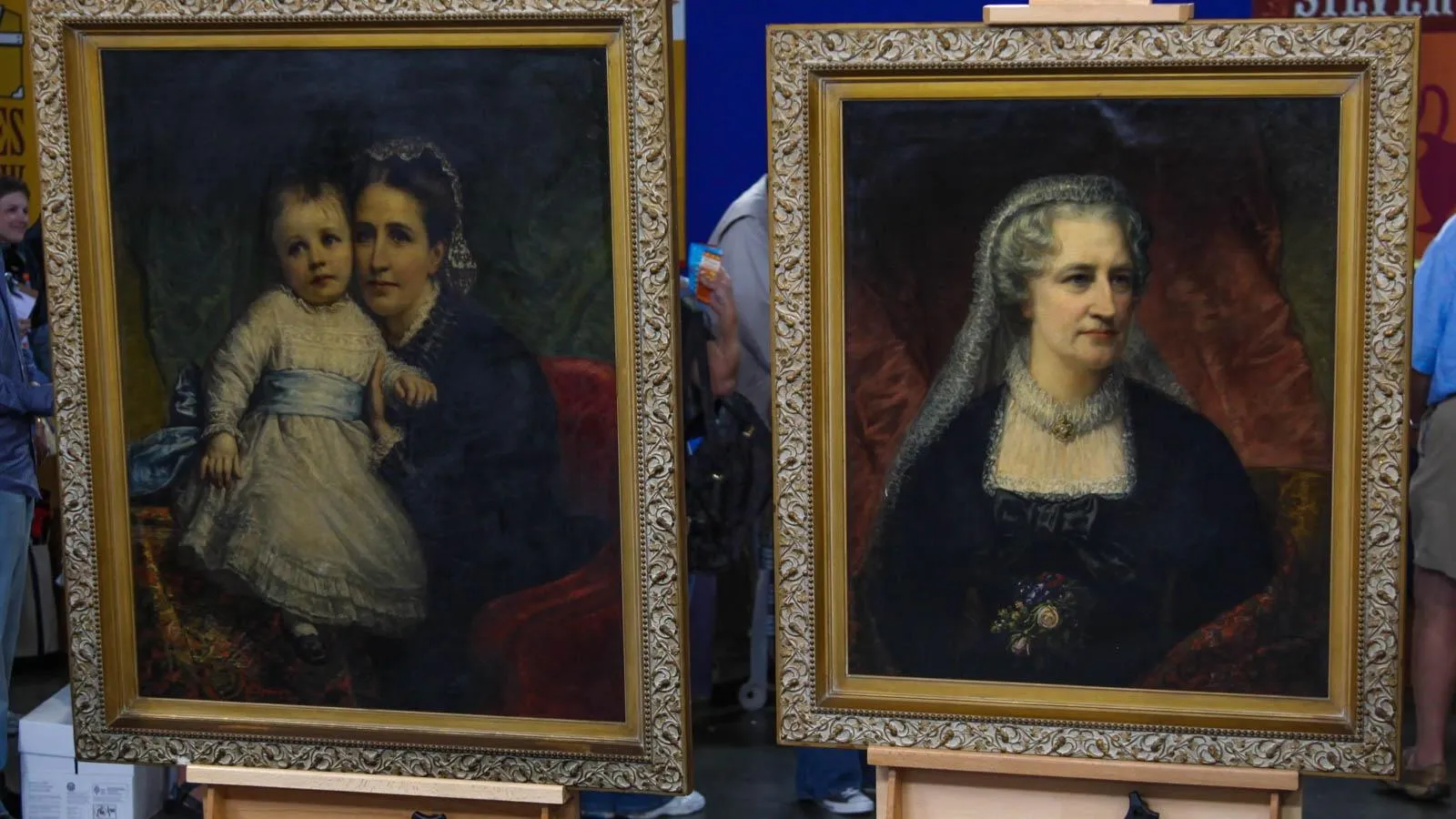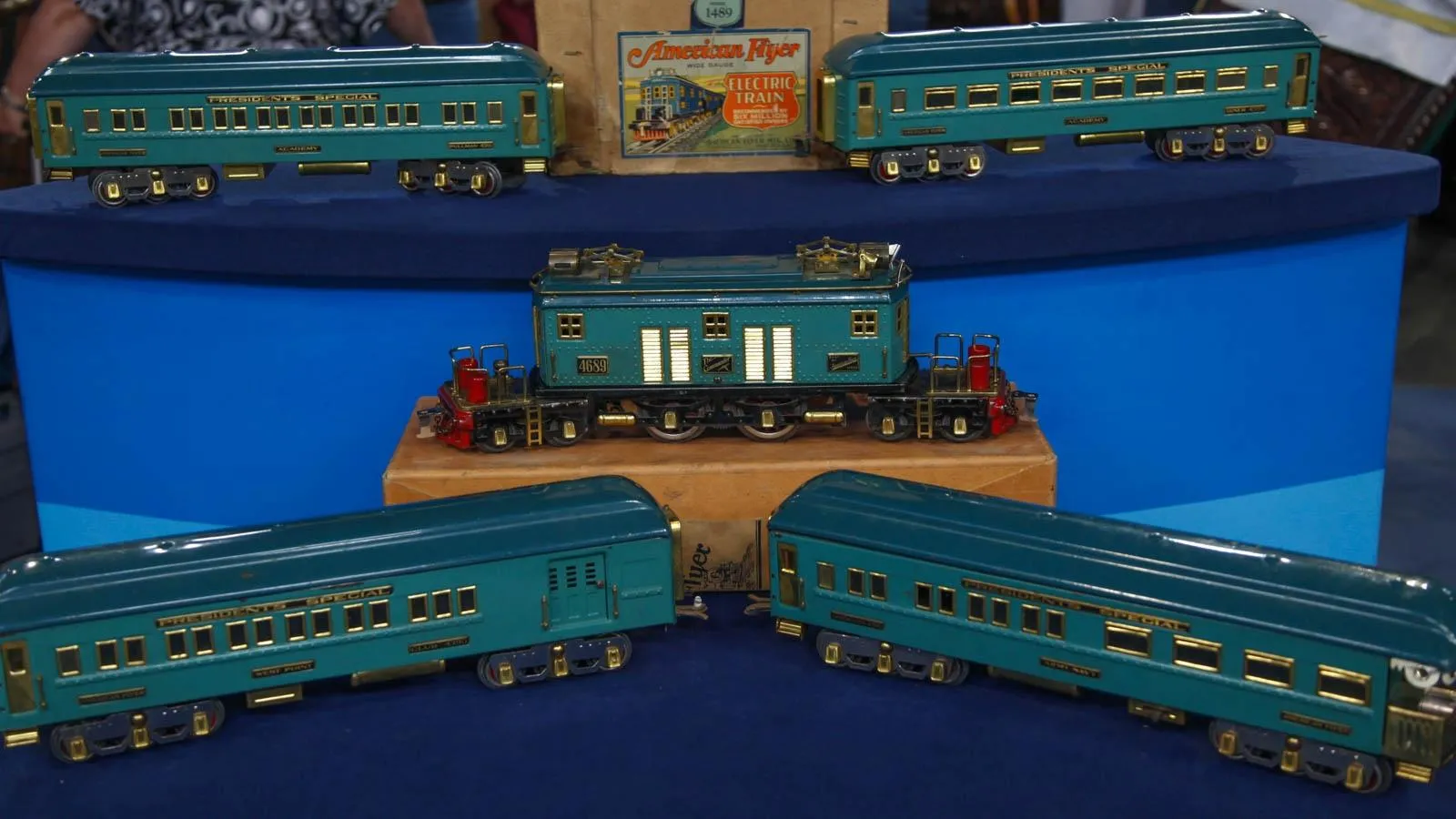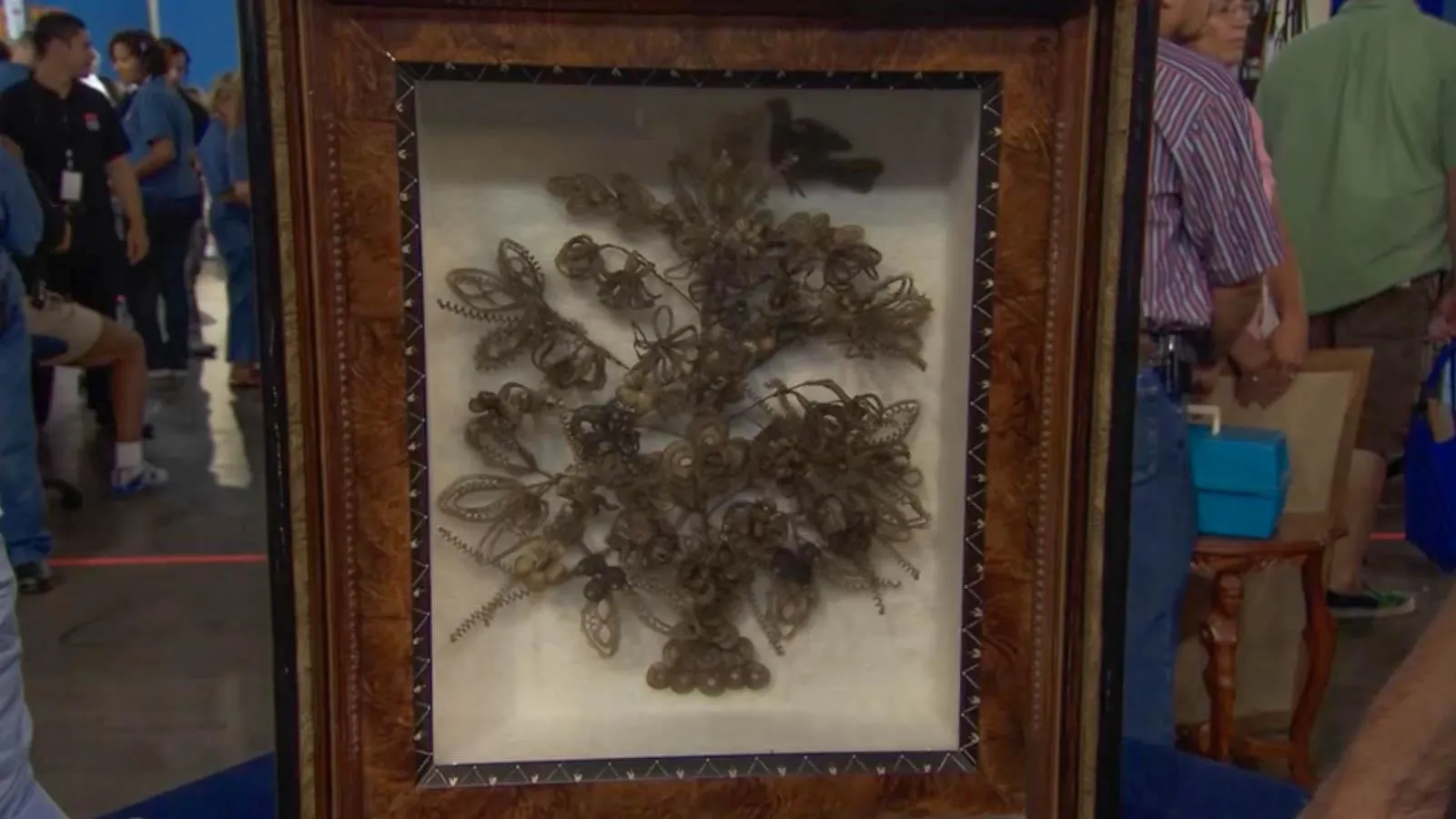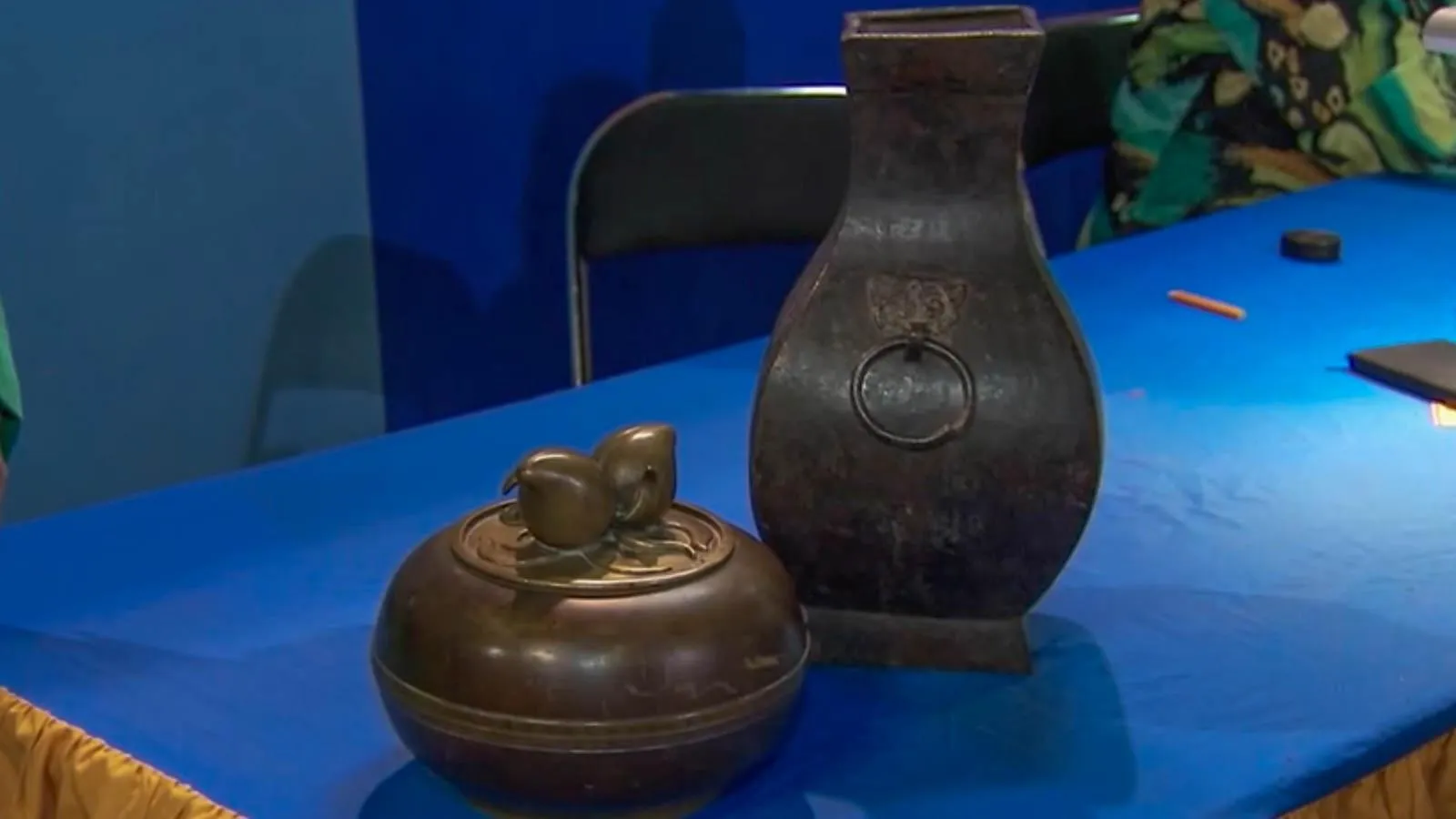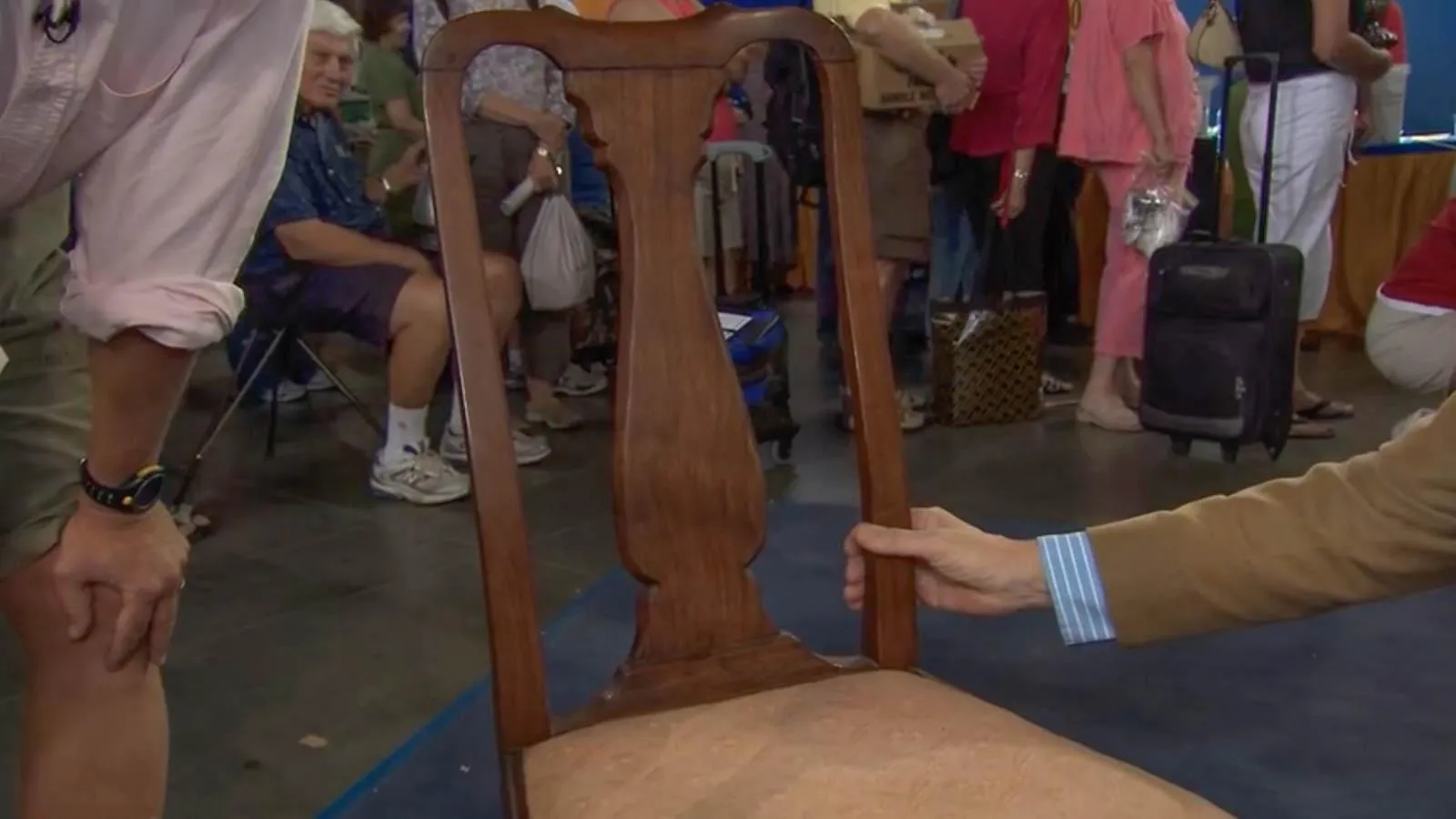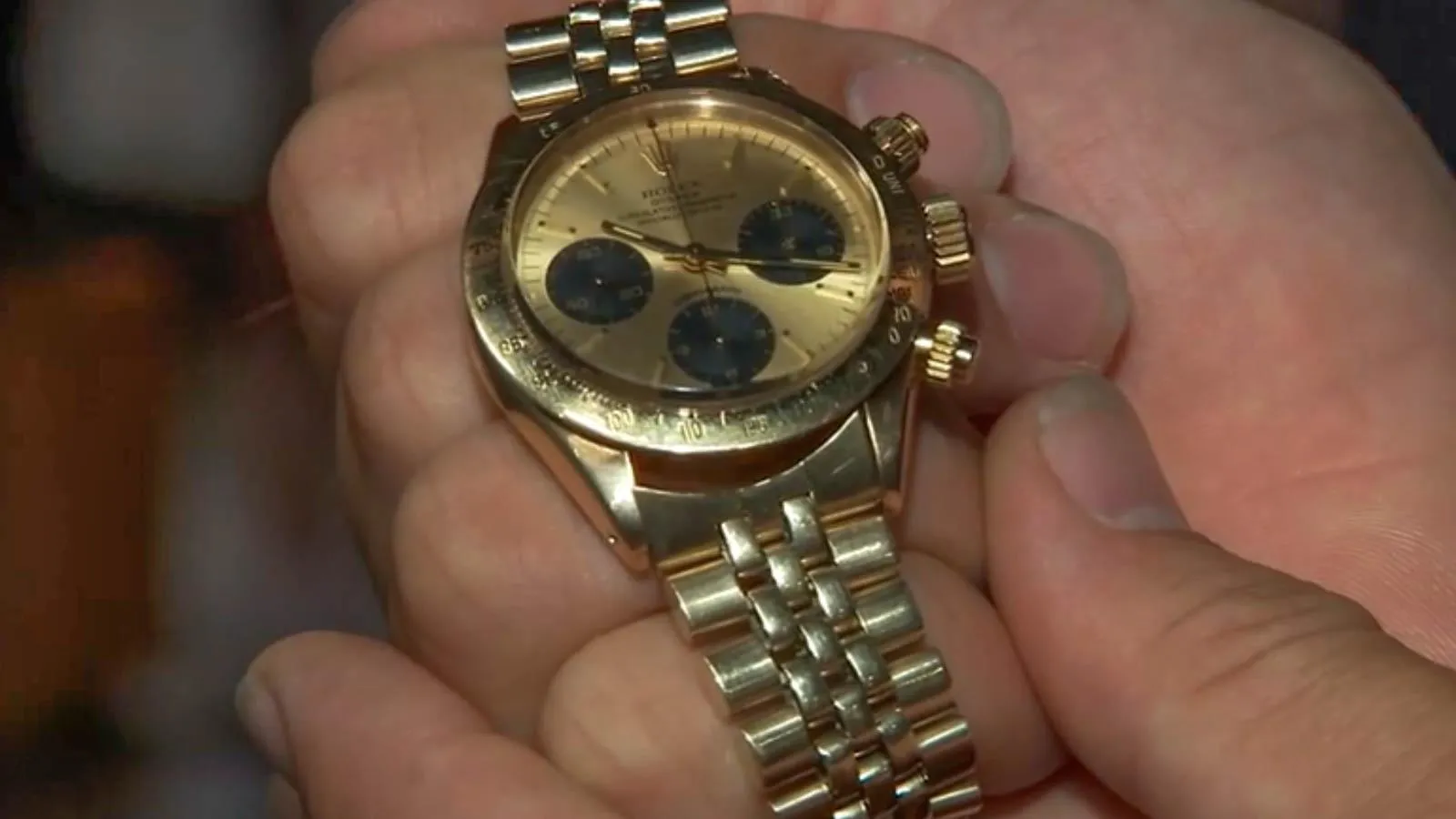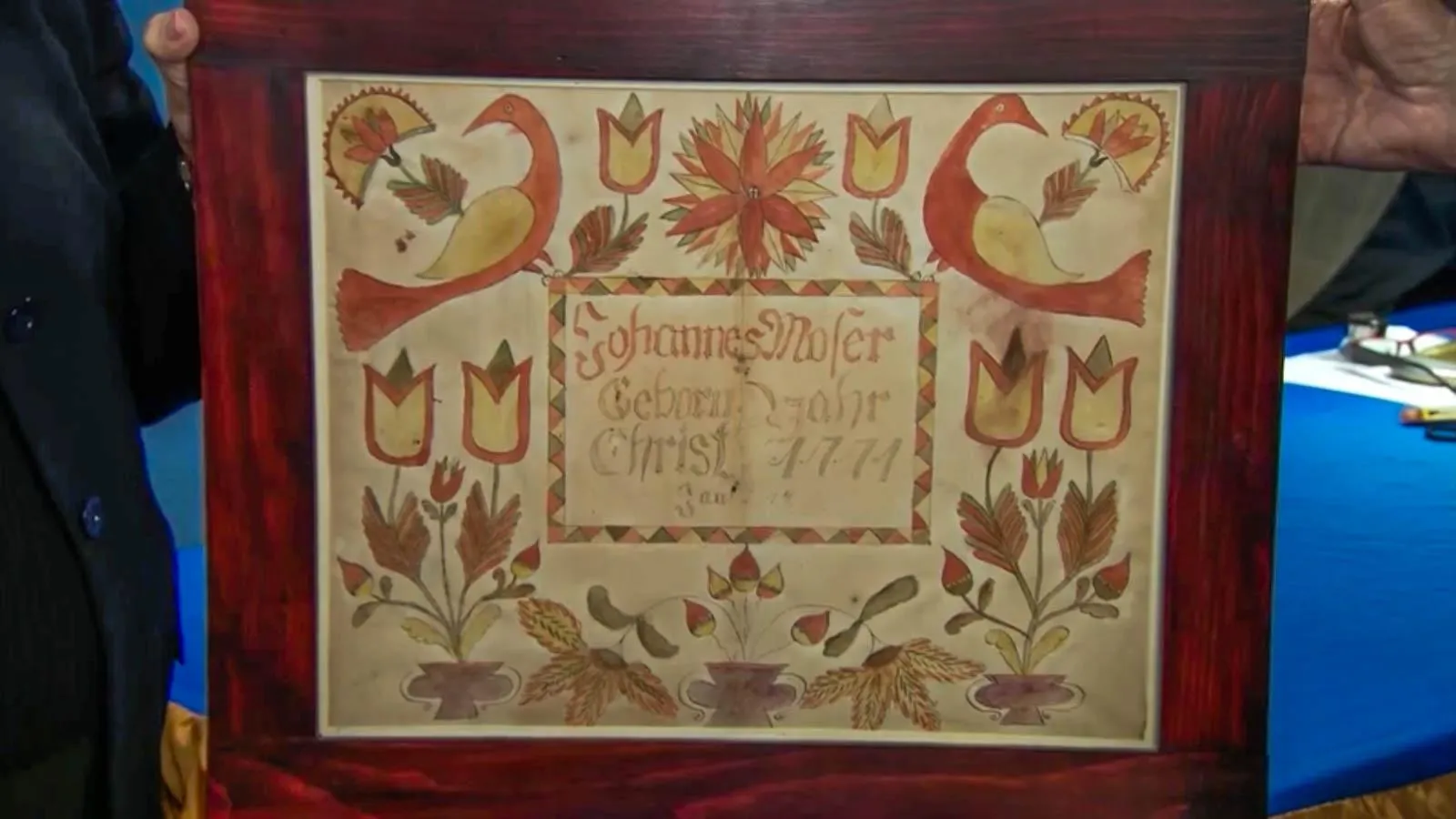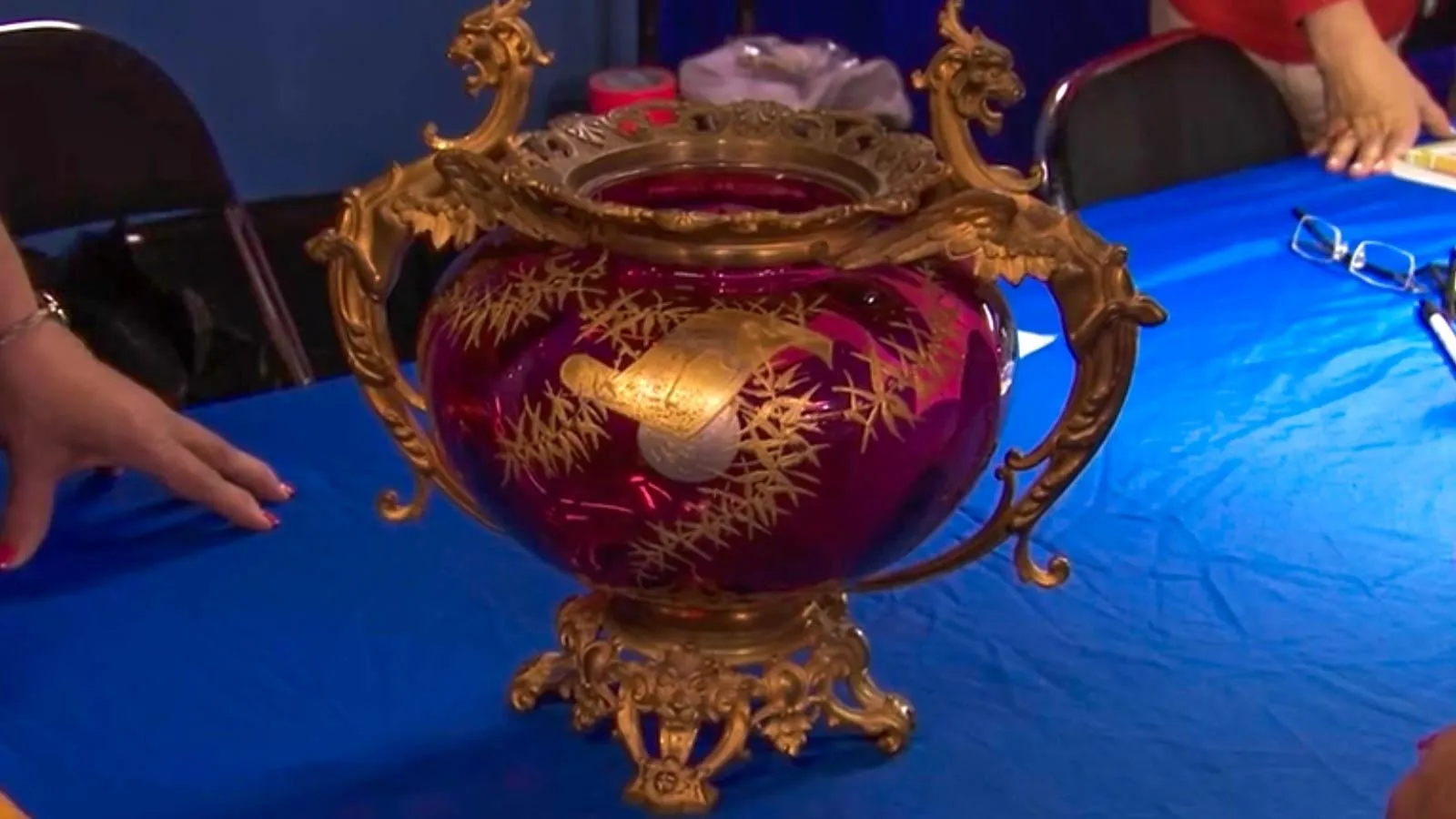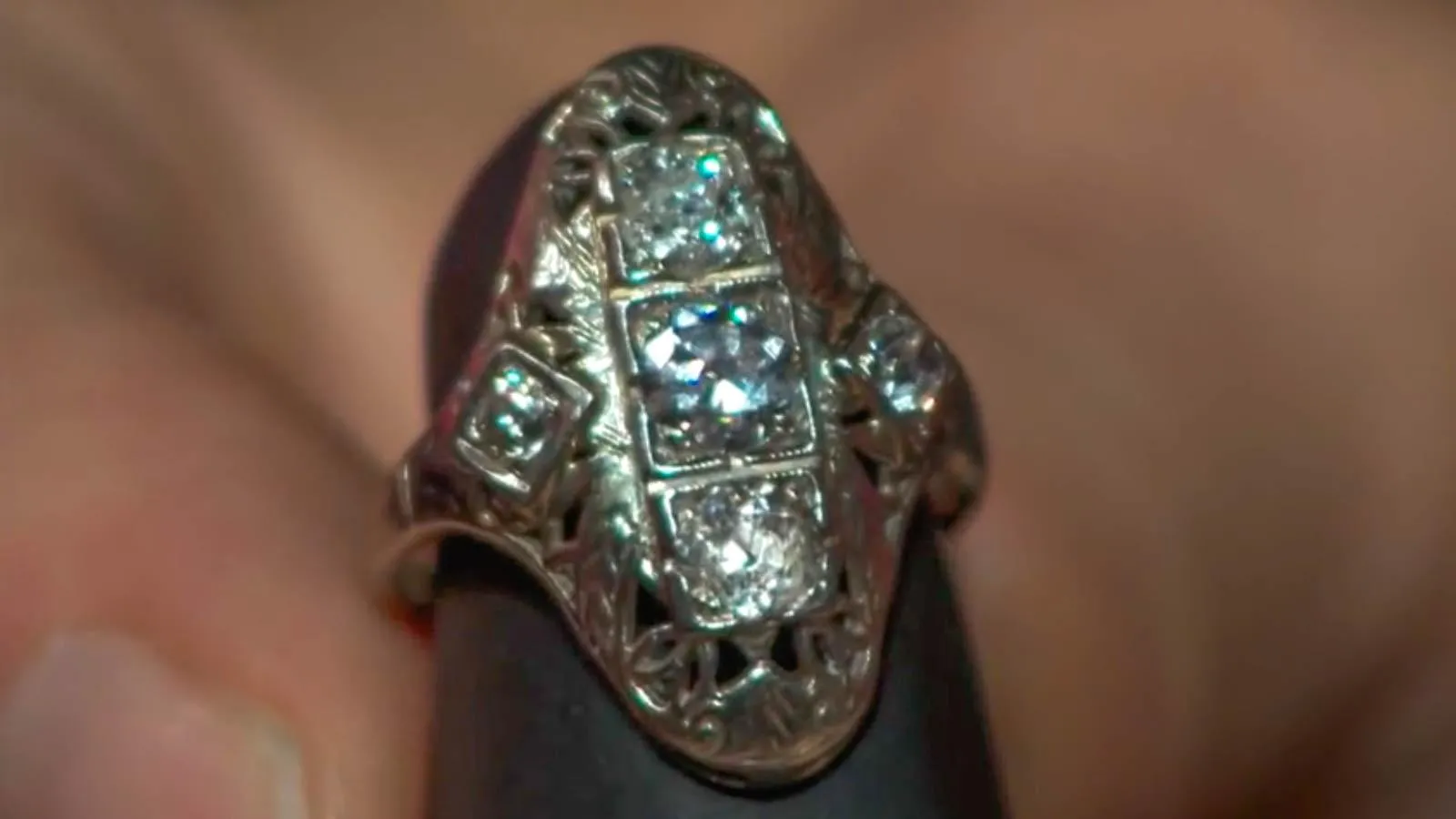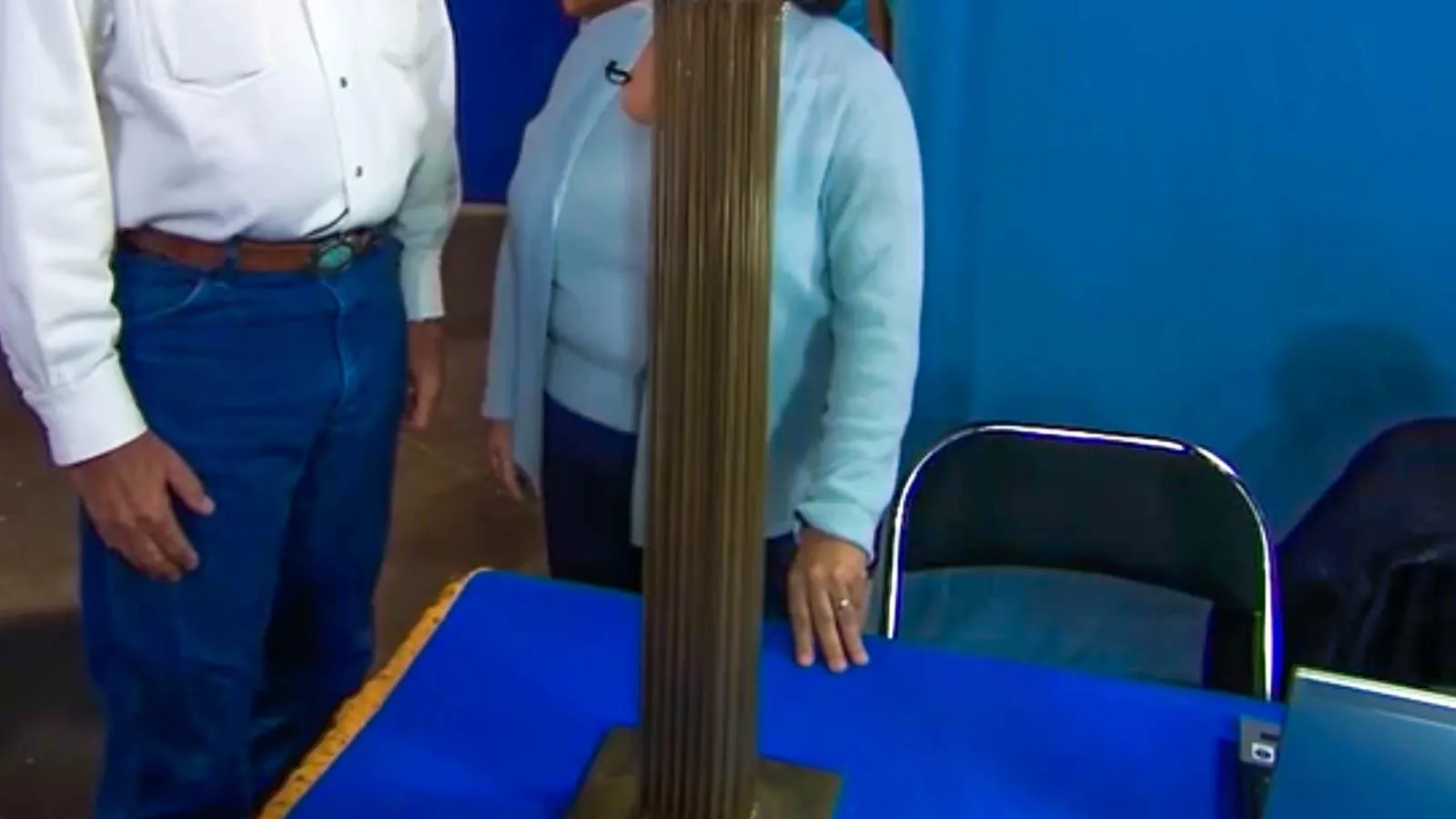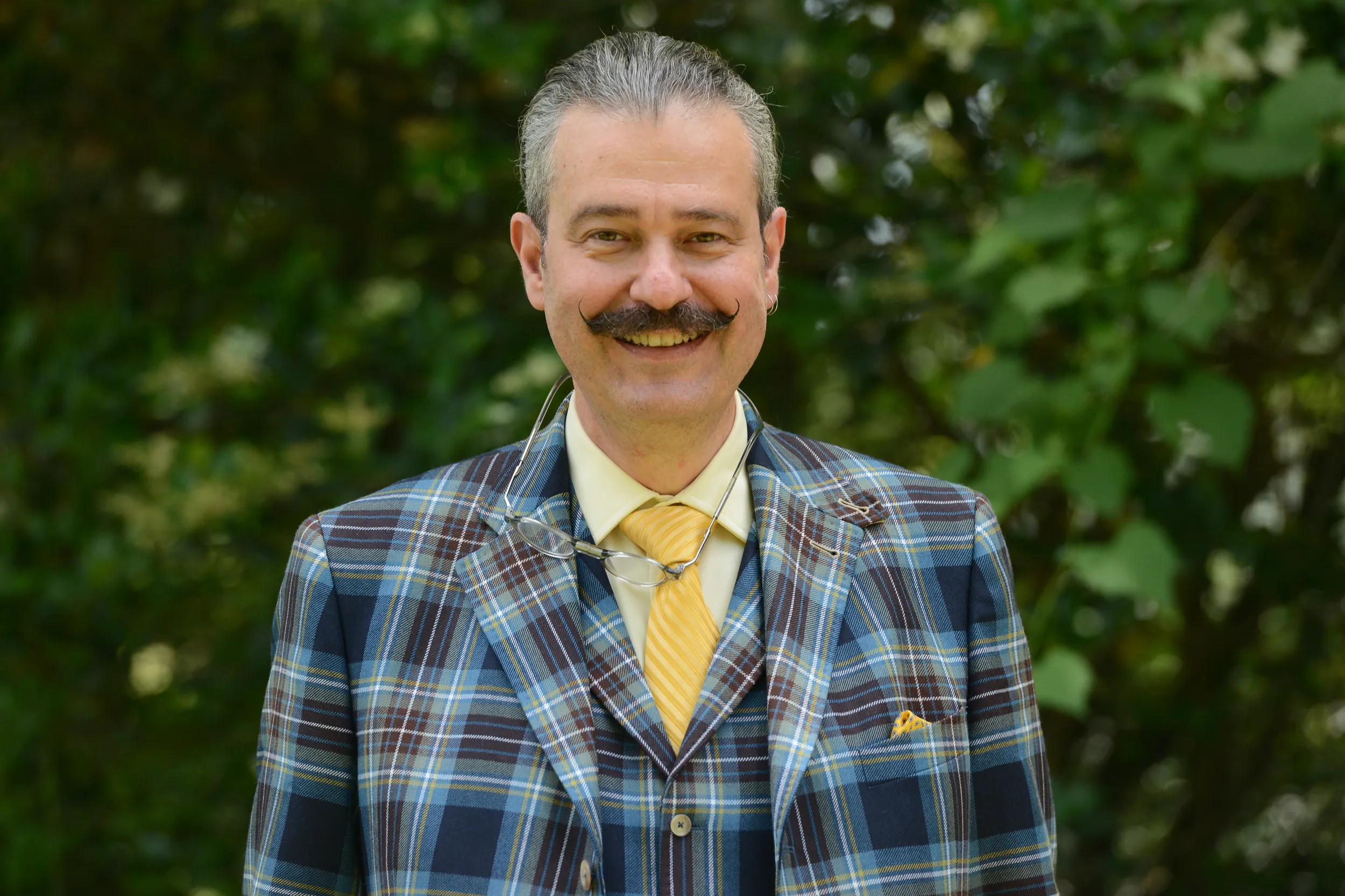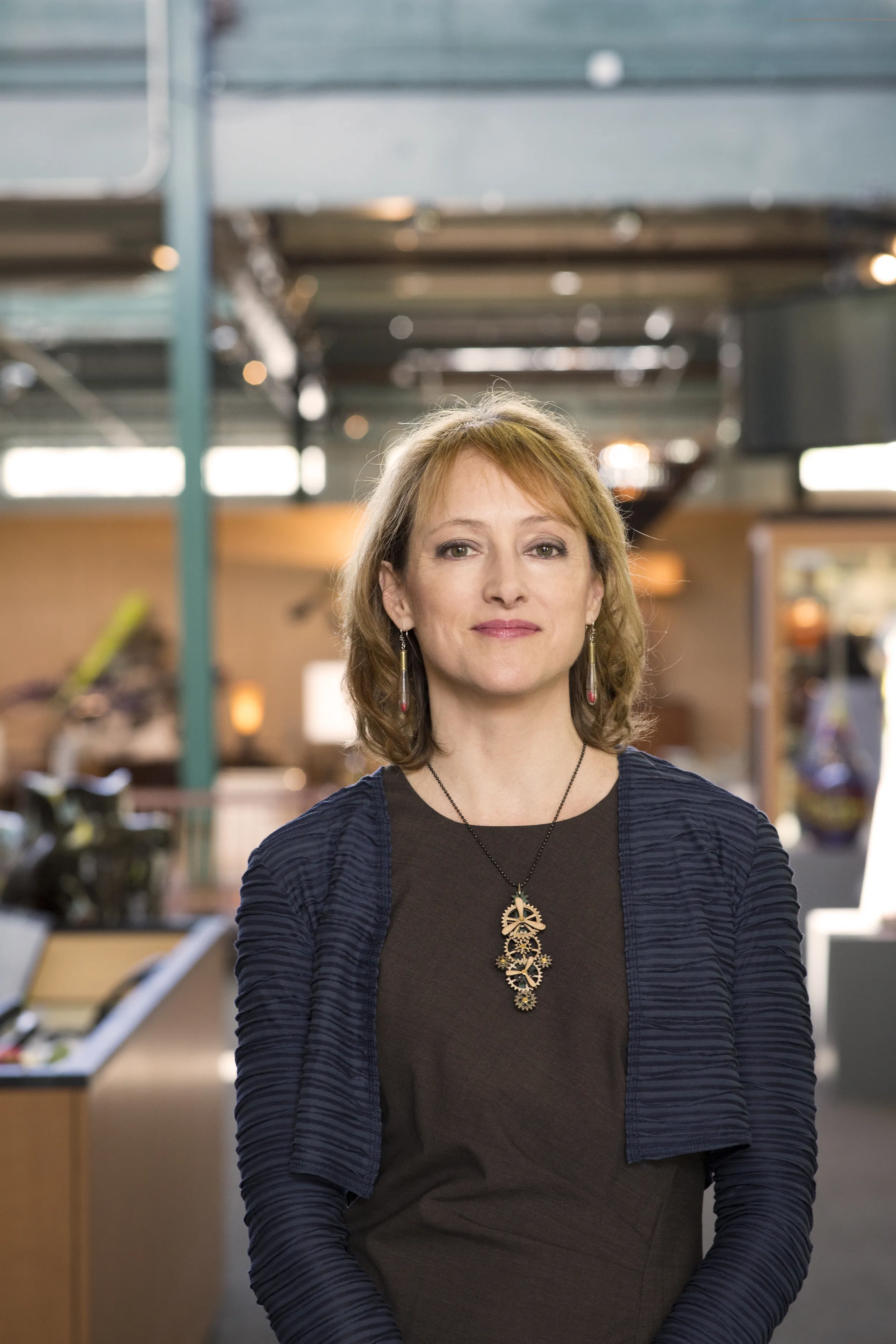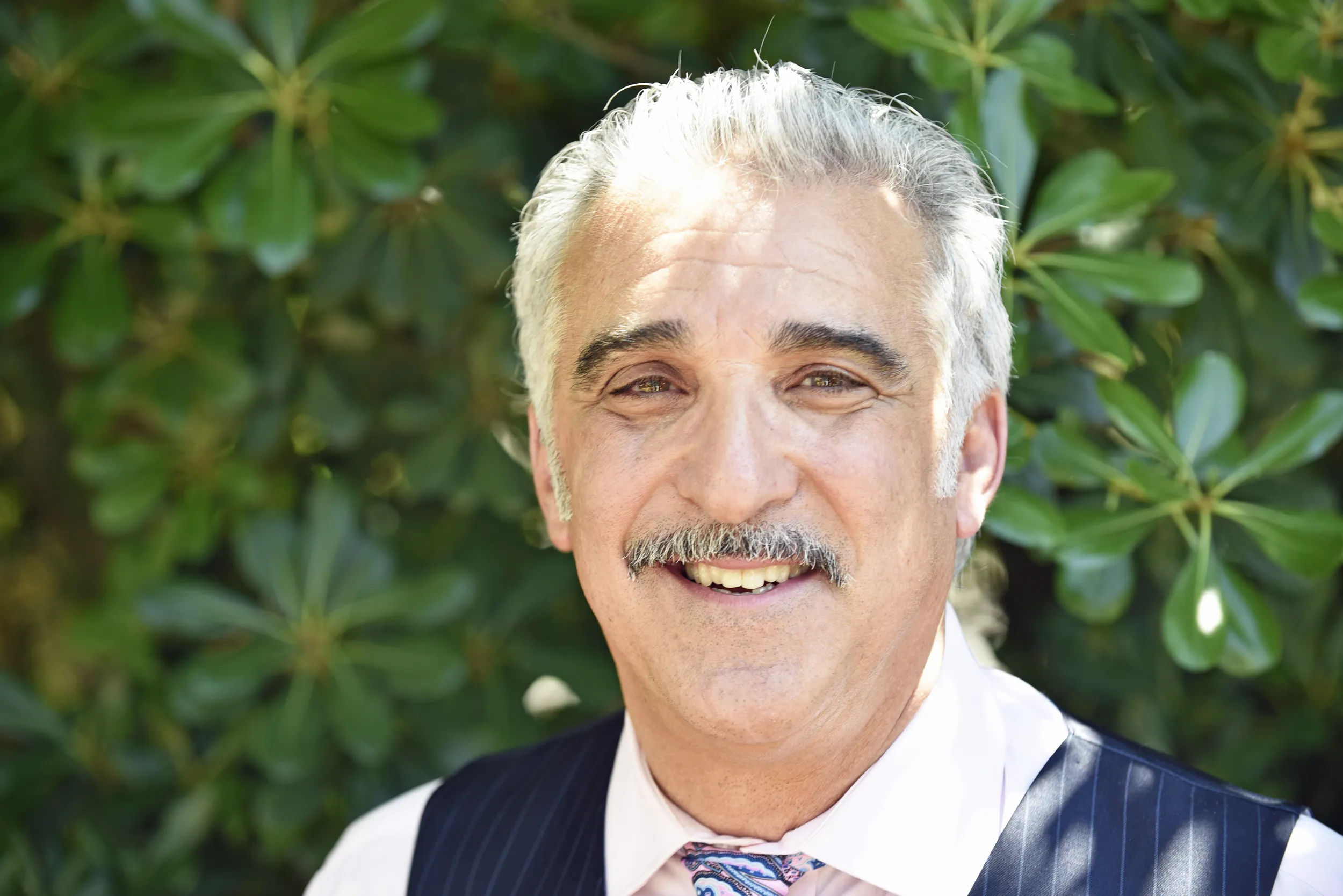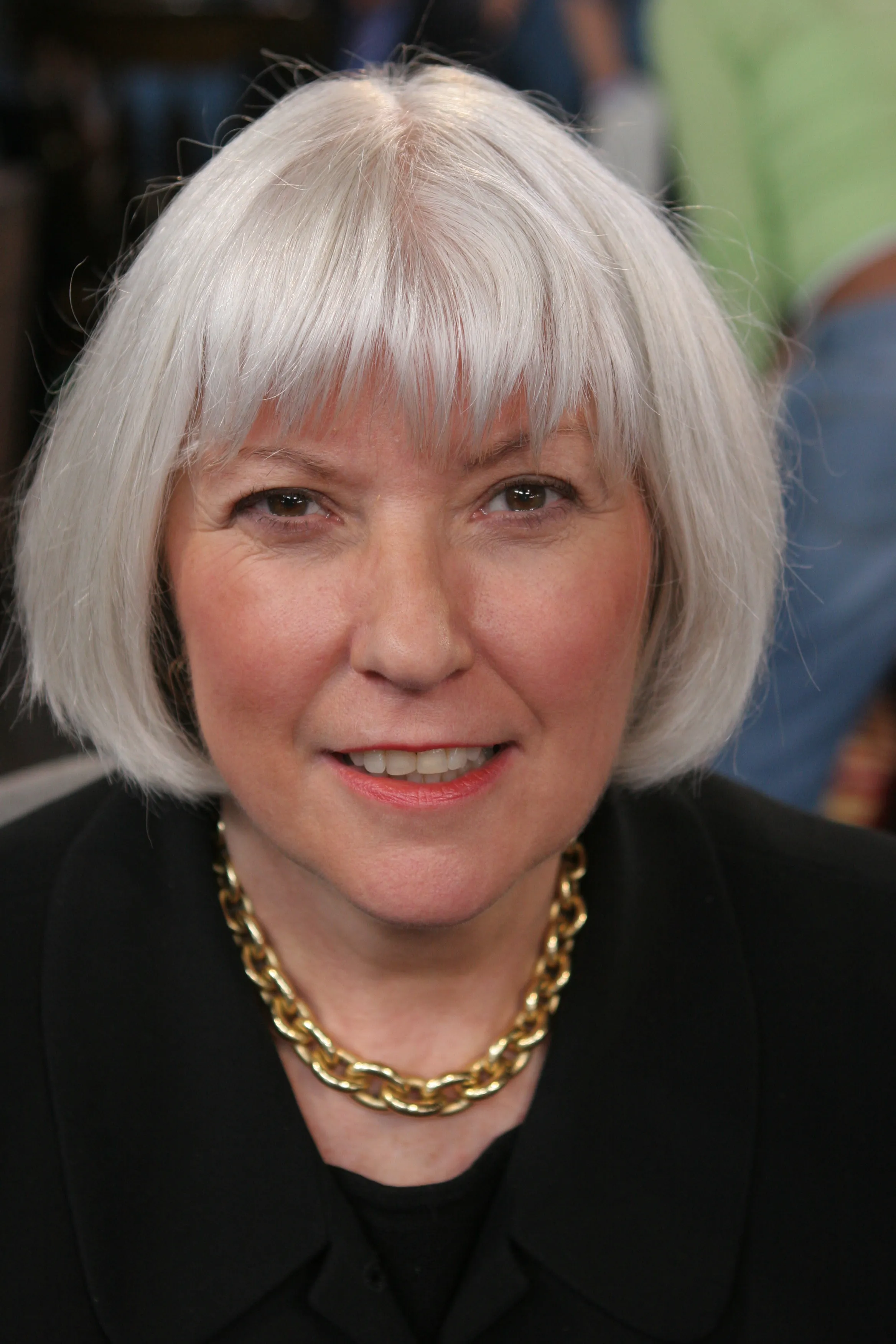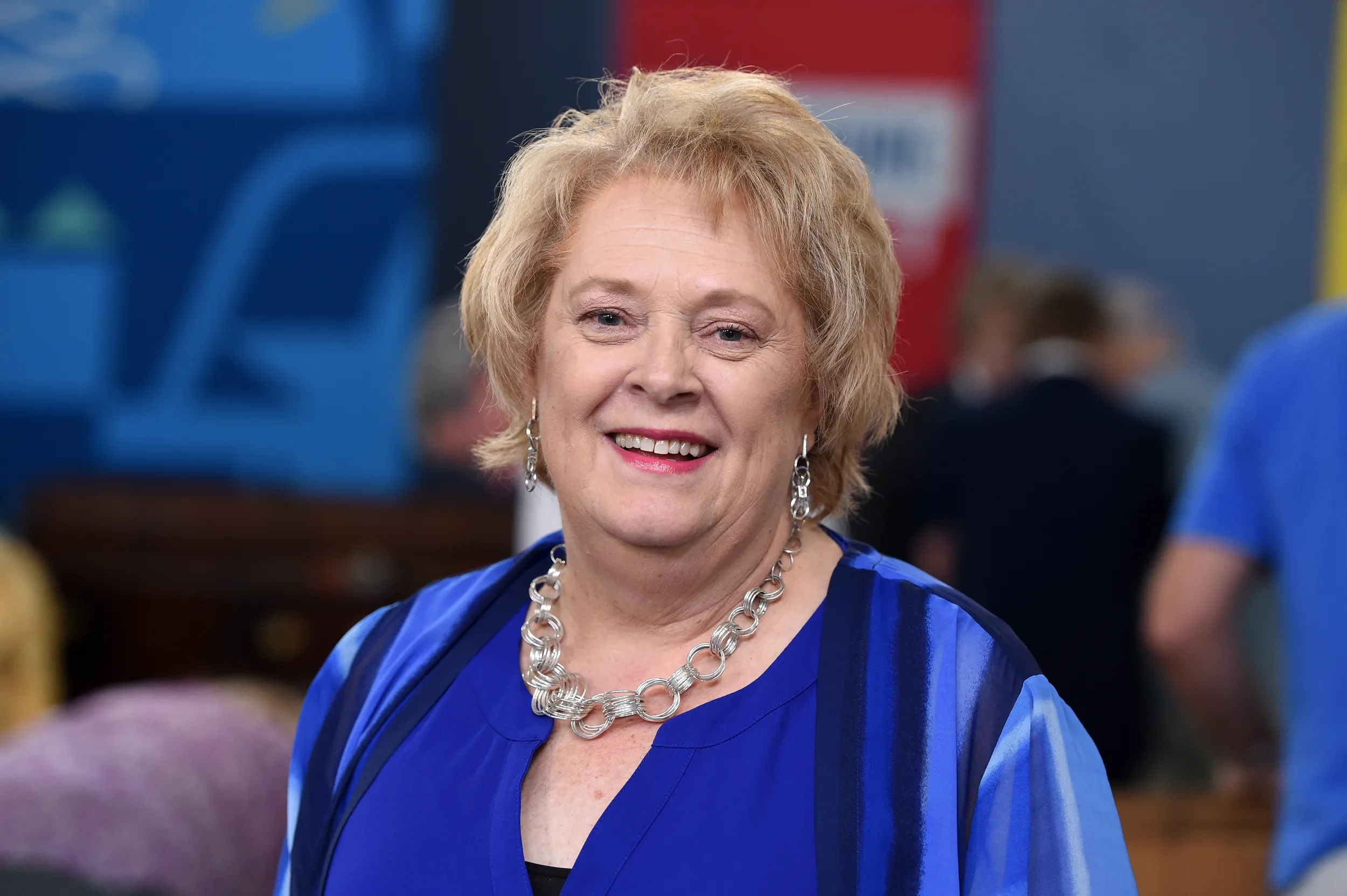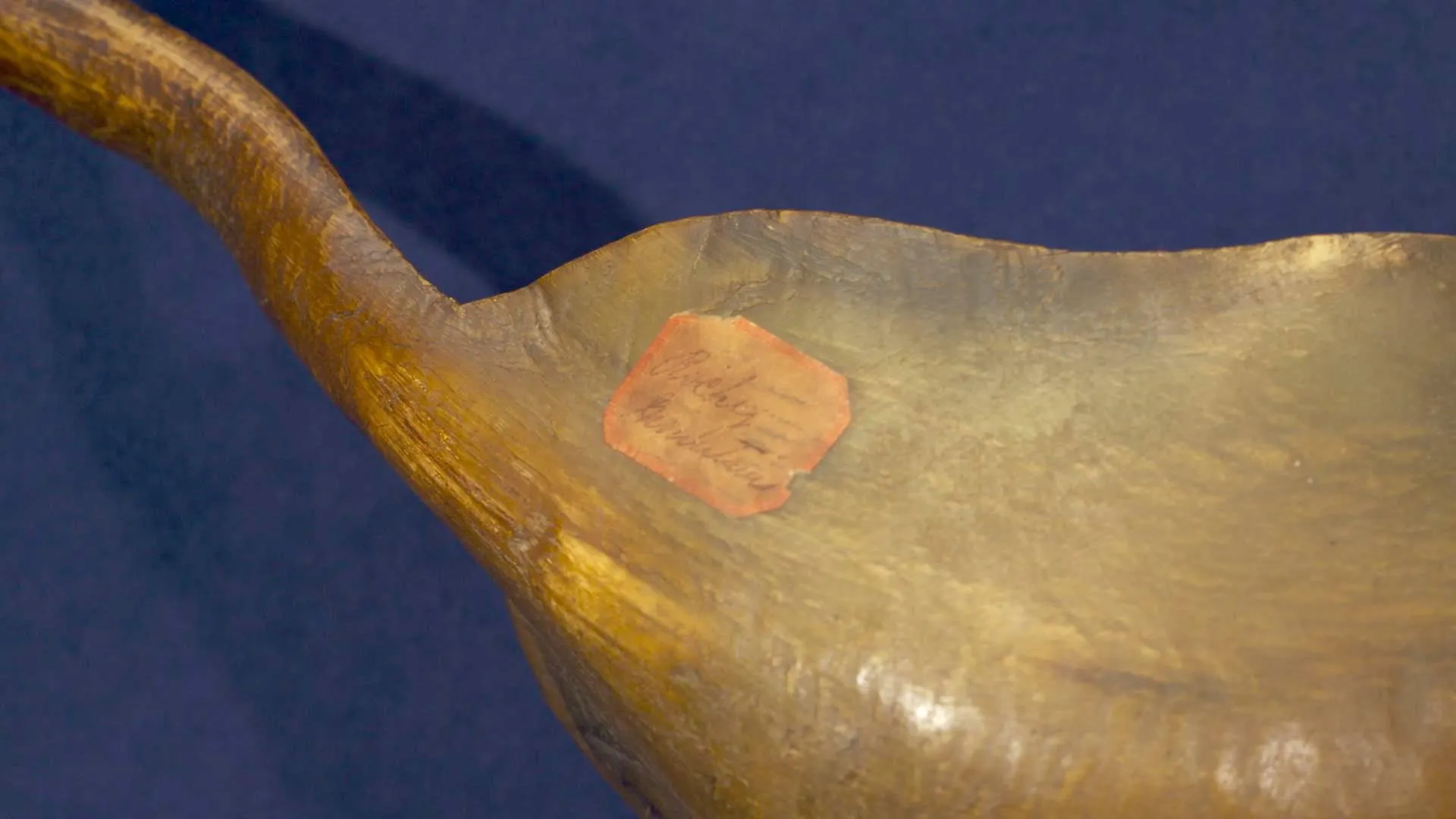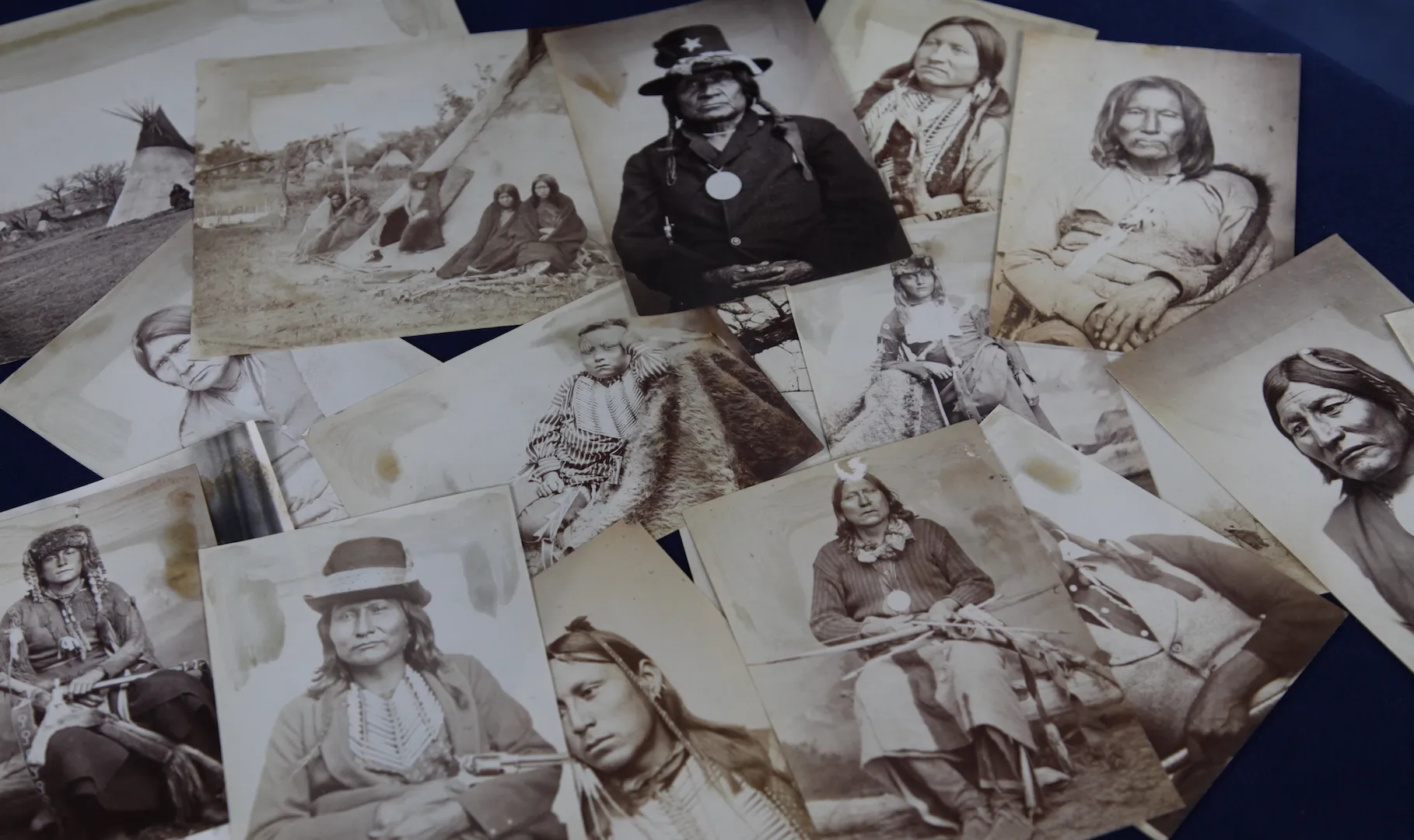APPRAISER: This is great fun, because your forebears really were on the Mayflower.
GUEST: Right, right.
GUEST: Well, that gave me a chill.
APPRAISER: Didn't it?
GUEST: Yeah, it did.
GUEST: Oh, my. That might almost send one of the grandchildren to college.
HOST: ANTIQUES ROADSHOW is revisiting the Colorado Rockies to explore the peaks and valleys of the antiques market.
APPRAISER: Somebody took it apart and put it back upside down and backwards.
GUEST: Oh.
APPRAISER: So that splat, this part, should be up here...
GUEST: Uh-huh.
APPRAISER: ...and that part should be down there, and...
APPRAISER: Not only did he survive the war, they gave him the honorary rank of brigadier general.
GUEST: My goodness.
APPRAISER: Your ancestor was an amazing man.
HOST: Come with us to find out which values have climbed to new heights, tumbled down, or stayed steady in this hour of Vintage Denver.
GUEST: This is an autographed picture of the original Mercury astronauts, autographed to my brother and I. The way we got this was, my father was a doctor in the Air Force, and he conducted the first medical evaluations of the original team of astronauts. So we have Wally Schirra, Gus Grissom, Alan Shepard, John Glenn, all those. They're a little faded, but, uh, my father knew these guys.
APPRAISER: Did you ever get a chance to personally meet any of these astronauts?
GUEST: Yeah, I met John Glenn and Alan Shepard. They, uh, came to my house for dinner one night.
APPRAISER: Wow.
GUEST: And John Glenn helped my mother do the dishes while Alan Shepard was setting up a telescope out front, and, uh, they showed us the rings around Saturn.
APPRAISER: That's great. One of the reasons why I'm really glad you brought this to the show today is because I'm able to give you a couple of different aspects into how you appraise a collectible. We're gonna touch on the provenance.
GUEST: Mm-hmm.
APPRAISER: We're going to touch on how the condition of the item is going to affect the value when it comes to sale, and how current events and what's going on in the market today is going to affect the value, as well. Starting with provenance, you have this wonderful typed letter. This is the itinerary for your dad's examining all the astronauts.
GUEST: Yes.
APPRAISER: And it lists the eight initial astronauts, including, at the bottom, you have William Douglas, right down there, who didn't make it in.
GUEST: He didn't make it, yeah.
APPRAISER: Right. So you would have had the Mercury Eight, and now you have the Mercury Seven. Okay, so the provenance is wonderful. And that six- or seven-page itinerary, showing the exams that he was gonna conduct, the time frame he was gonna do it, the different things he had to do, that adds significantly to the value of the picture. As far as the photo goes, of the seven astronauts, five of the signatures are pretty strong, very clear. Cooper and Schirra are a little bit faded.
GUEST: Yeah.
APPRAISER: And that's the result of direct sunlight on the ink. That's something you can't correct.
GUEST: No.
APPRAISER: And it's definitely something that's gonna have a negative effect on the value. And the third thing is the current events and how that's going to affect the values. Now, we just passed the anniversary of the man walking on the moon.
GUEST: Mm-hmm.
APPRAISER: Space memorabilia and space collectibles is very hot right now, a very popular collectible. A lot of auction houses are doing auctions just devoted to space memorabilia. For auction purposes, I would estimate the photo-- and I'm, I'm being a little conservative because of the condition, and I'm adding in value based on that paperwork that's there, which is really critical. Without that paperwork, I wouldn't have been as excited about it. I'm gonna place an auction estimate on this at $3,000 to $5,000.
GUEST: Wow.
APPRAISER: If you wanted to insure it, insure it for $7,500 or so.
GUEST: Okay.
GUEST: It was from my great-aunt's estate, who was a real-world traveler, but also collected things in the United States. I got it, I saw it in a museum about five years later in San Francisco-- not this identical piece, but one extremely similar to it. So when I got home, I looked it up online, and it said at that time it was from a prestigious Eastern pottery school, and the artist was well known, but the piece was only worth, uh, $215 to $250. And that was all I knew about it, and, uh, it's been packed away ever since. It was the last thing I grabbed this morning, thinking I needed one more piece.
APPRAISER: It's a beautiful example of Weller Sicard, or Sicardo. Weller was the name of the company that was in Zanesville, Ohio, and Sam Weller, who was the owner of the company, hired Jacques Sicard, a Frenchman, to come from France and replicate a line that he was doing, and that line was called Reflets Métalliques, or Metallic Reflects, which is this.
GUEST: Right.
APPRAISER: It's an Art Nouveau line where you glaze the vase and then you add little, uh, silver or copper oxide chips and fire it, and there's a lot of hand work that has to happen after that. Sam Weller did not have a very good reputation with the artists that he hired. There had been somebody else before, by the name of William Long, who he hired for his line called Lonhuda. Weller pretty much figured out how Lonhuda was made and then pushed William Long out of the company. Jacques Sicard knew that, so when Sam Weller wanted his helpers to help out-- "help out"-- Jacques Sicard with this, Sicard says, "No way, I'm going to do this in the privacy of my own little studio." So he did this in a closed room. He found some holes being drilled in the wall... (laughs):
GUEST: Oh, you're kidding.
APPRAISER: ...because they were trying to spy on him...
GUEST: Oh, my gosh.
APPRAISER: ...to steal his recipe, but they were not able to, to steal this.
GUEST: What a great story.
APPRAISER: The line started appearing in 1903, and Sicard was back in France in 1907, so it would have been made within those years.
GUEST: I had no idea it was that old, actually. I assumed it was from the 1930s.
APPRAISER: Weller was on to very, very different kind of production by the '30s, much more commercial. So, this lovely piece of Weller Sicard, which is signed down here...
GUEST: Oh, my gosh, I didn't even see it.
APPRAISER: It's usually in camo. Is worth these days, at auction, around $1,000.
GUEST: Wonderful.
GUEST: This is made out of my relatives' hair by my grandmother's grandmother, and ever since I was five or six years old, I was just fascinated by it, and I'm the only one in the family that is.
APPRAISER: It represents an enormous amount of skill, something that was done during the Victorian period, where people saved their hair and either made jewelry out of it or did these family hair wreaths that were sort of a memorial. Any idea what this is worth?
GUEST: It's not worth anything, according to my wife and daughter.
APPRAISER (laughs)
GUEST: That's why it sits in a closet and it's not displayed.
APPRAISER: So I hope this wasn't a hair-raising experience for you.
GUEST: Their interest may perk up just a little bit.
APPRAISER: Excellent.
GUEST: It originally belonged to my uncle.
APPRAISER: Well, it's almost like opening a time capsule. That's the way we love to see these things-- beautifully conserved. I would price this one, in today's market, at about $3,000 to $3,500.
GUEST: I'm surprised.
APPRAISER: It's a great, great guitar. Thanks for bringing it in today.
GUEST: Well, thank you. (chuckles): I enjoyed this.
GUEST: I bought it at the 1972 Channel 6 art auction. I recognized it as a Bertoia. I heard about it. And my sister said, told me to buy it. She said someday it'd be worth something.
APPRAISER: (stammers) What'd, what'd you pay for it?
GUEST: $500.
APPRAISER: Wow, that's a lot of money at that time.
GUEST: Hey, I could have bought a lot of horses in those days. (laughs)
APPRAISER: So what attracted you to it?
GUEST: I just thought it was nice, and the sound was the best part, so...
APPRAISER: Yeah, Bertoia is really one of the best-known modern artists. Italian-born, lived in this country. He did a lot of furniture designs. He did jewelry and sculpture. And he's probably best known for these tonal works. They're called Sonambients. And they're really intended to, to play. We can, um, have a listen here. (rods vibrating) And, you know, you were able to, to listen to them, you were able to have multiple that you could, uh, play together. He recorded the sounds in a studio, and was just very interested in them. And these were made from the, about 1960 until his death in 1978. So you were buying right at the height.
GUEST: So is it real? That was my first question.
APPRAISER: Yeah, no, it is, it is...
GUEST: He didn't sign, so...
APPRAISER: It is real, and he didn't, He didn't always sign his works, particularly these types of sculptures. But they do come up, um, at auction pretty regularly. And they've got a fair amount of value. It was a good investment at the time. I'd say probably at auction today, in the $15,000 to $20,000 range.
GUEST: Ooh, shucks, that's a lot of money. I could get my tooth fixed for that. (laughs)
GUEST: It's a poster that I was given, uh, by a friend of mine. I guess didn't want to carry it around anymore, so I inherited it. And I know it's a Jean Carlu, uh, 1937 National Exposition poster. And I've never seen one quite so big. I've been looking on the internet for a while, and never seen a bigger version of it.
APPRAISER: First of all, let me say, you have nice friends who give you such...
GUEST: (laughing) Apparently.
APPRAISER: Certainly such eye-catching presents.
GUEST: Yeah, it's a great thing.
APPRAISER: Uh, and I think, for starters, this poster certainly lends a new meaning to the term "eye-catching."
GUEST: Yes.
APPRAISER: And I don't think it's a coincidence that the artist chose to depict an eye. You do know that the artist is Jean Carlu.
GUEST: Yeah.
APPRAISER: And Carlu was one of the most famous Art Deco graphic designers working in France in the 1920s and 1930s.
GUEST: Uh-huh.
APPRAISER: But there is one very interesting fact about him that a lot of people don't know. He only had one arm.
GUEST: One arm?
APPRAISER: And he was working in France on this big exhibition, and then in 1939, he went to New York to work on the French Pavilion at the New York World's Fair.
GUEST: Right.
APPRAISER: While he was in New York, war broke out, and he ended up staying in New York, and he actually designed some posters in America.
GUEST: Right.
APPRAISER: Now, this exhibition was basically a world's fair. And the exhibition was famous and important for several reasons. At the Spanish Pavilion, they actually displayed Picasso's painting "Guernica." Now, keep in mind this was going on concurrently with the Spanish Civil War.
GUEST: Right.
APPRAISER: Also, it was very politically charged because the Germans and the Russians each had a pavilion, so politically, there was a lot of tension between the German government and the Russian government.
GUEST: Right.
APPRAISER: And you can see all the different flags of the world depicted here.
GUEST: Yes.
APPRAISER: Including the Russian flag.
GUEST: Yeah.
APPRAISER: And closest to you, the German flag.
GUEST: Yeah.
APPRAISER: Of course, the swastika has very many negative connotations, and oftentimes, when trying to sell art that depicts the swastika, that can have a negative impact on the piece's value.
GUEST: Right.
APPRAISER: Now, as far as the value of the piece goes, you said you know of one in a different size?
GUEST: Yeah, I've seen, uh... On the internet, I've seen, uh, ten-inch by eight-inch posters that go for around $800. So I've never seen anything quite this large, so...
APPRAISER: You know, in fact, this is the largest of three different sizes. The one you saw is the smallest size.
GUEST: Right.
APPRAISER: There is an intermediate size, and then there is this, the largest format.
GUEST: Right.
APPRAISER: It's also interesting to note that the posters exist in different languages. Now, this poster is so large, it's actually very hard to display.
GUEST: Right.
APPRAISER: You yourself said you'd never actually seen it hanging, because it's too big.
GUEST: Right, yeah.
APPRAISER: But at auction, I would estimate the value of the poster at between $2,500 and $3,500.
GUEST: Cool.
APPRAISER: So all told, I think, a, a really generous gift from a friend.
GUEST: Very. Very much so, yeah. Quite a great poster, too.
GUEST: Well, it was, uh, a prize saddle won by my grandfather in 1914, and it has just been in the family since. Actually, they had it and then I was given it.
APPRAISER: I see, and what did he win it for?
GUEST: He won it in a three-day horserace. They had to let their own horses go, uh, into a corral with all the other contestants, and then they had to go 25 yards away, run, get their horse saddled, and run around the track three days in succession. And he got the fastest time and won the saddle.
APPRAISER: Well, what that shows is that rodeo has changed a lot since 1914. Saddles were the great trophy that was awarded, and this is a great saddle. The saddle was made at Miles City Saddlery in Miles City, Montana. Now, from 1895 to 1909, a man named Coggshall ran Miles City Saddlery under his name, and then it switched to Miles City Saddlery in 1909. So this came out five years after they switched the name. It's got a lot of great design features. The name of the rodeo is across the back of the cantle, with the date. It has a lot of silver alloy trim. Looks like nickel silver. It has the classic bronc image on the fender, the "Let 'er Buck" image that everybody still uses even today.
GUEST: Right.
APPRAISER: And the great thing is, is, you've got a great picture of him riding the exact saddle. So it's kind of a neat thing, and early rodeo saddles are not very common. They just didn't survive. And so it's really great that you guys carried this down through your family. Early rodeo material is pretty desirable. There's just not a lot of it around anymore. If it came up for auction today, easily $3,000 to $5,000.
GUEST: Nice.
APPRAISER: And possibly more.
GUEST: Right. The reason he won is, he had his horse trained to come when he whistled, so the horse just ran right up to him. (laughs)
APPRAISER: So he didn't have to chase him down and rope him, like everybody else did.
GUEST: He didn't have to chase him down, no. He just whistled, and here came Old Dan.
GUEST: My mother had this on her dresser all of her life. She always thought of it as her mother holding her, and she really treasured it. It has a signature on it I've never been able to read. I'm here to find out, uh, more about it.
APPRAISER: This is signed by a very prominent American woman sculptor.
GUEST: Oh, a woman.
APPRAISER: And she worked in the early part of the 20th century. And her name is Bessie Potter Vonnoh. It's actually dated, although I can't quite make out the date. And then it also has the foundry mark. It was cast by the Roman Bronze Works of New York City.
GUEST: In New York City.
APPRAISER: Yeah, they were a very prominent foundry at this time, and they did wonderful work. Bessie Potter Vonnoh was born in the 1870s, and she was from Chicago, and she started working on, uh, works at the Columbian Exposition of 1893. She was an assistant to Lorado Taft. And she also studied at the Chicago Art Institute. And she also went to Paris, and she met up with Rodin, who was probably the leading sculptor of the time. She's contemporary with the Impressionists, and in fact, she married an American Impressionist painter named Robert Vonnoh in 1899, and they moved to New York City in 1899. And she continued to live there the rest of her life. It's very fluidly modeled. When you usually think of bronzes, you think of these smooth, slick surfaces, whereas this has a lot of variation in the surface. It has a life and a texture to it. And it was cast in the lost wax process. But it has a, a very wonderful expression and feeling to it, this interaction of the mother and child. It's in very nice condition. It has this green patina. Bronzes can be made in a number of different patinas, different shades of light brown, dark brown.
GUEST: Is the patina mainly from age, or was it put on when...
APPRAISER: It's put on.
GUEST: I see.
APPRAISER: After the piece is cast and finished, various chemicals are applied to the surface, usually with heat, and it's actually worked in as part of the surface. And that's what's so important about sculpture, that it has to be done during the lifetime of the artist, because it's really a whole process. The artist makes the model, and it's brought to a foundry, where it's transformed into a bronze. And the artist has to supervise this and give them guidance as to how they want it finished and what kind of patina it should have. Now, do you have any sense of the value of it?
GUEST: I have an appraisal from my grandmother's estate in 1938, and it has only a value of $100. So, uh, I hope it's worth a whole lot more than that. (chuckles)
APPRAISER: I think it is worth more than $100. Her work is very, very desirable. In a gallery setting, this piece is probably worth between $20,000 and $30,000.
GUEST: Oh, my gosh! (chuckles)
APPRAISER: (chuckling): Okay?
GUEST: From $100.
APPRAISER: From $100 to $20,000 to $30,000.
GUEST: That's astounding.
GUEST: We paid $1,000 for it at an auction in Niwot, Colorado. We've always wondered if it is a true Moser piece, which we were told, and if it was at least worth what we paid for it.
APPRAISER: Okay, well, what we have here is a true Moser piece, and today at auction, this would be $1,800 to $2,500.
GUEST: Oh, okay.
APPRAISER: But, in a nice antique shop...
GUEST: Mm-hmm.
APPRAISER: ...would be $3,500.
GUEST: Oh, wow.
APPRAISER: So it was a very good investment.
GUEST: That is, that's fabulous.
GUEST: I got it from my aunt who lived in Philadelphia, and she picked it up there somewhere.
APPRAISER: How long ago?
GUEST: Oh, could have been 40 years ago, because she had it a long time before I got it.
APPRAISER: So, do you know what it is?
GUEST: It's a Pennsylvania German fraktur.
APPRAISER: Fraktur, or Taufscheine, they called them, also.
GUEST: Yes.
APPRAISER: And what's unusual about this, and why I was so excited, is that it's hand-drawn. Many of them are printed.
GUEST: Mm-hmm, mm-hmm.
APPRAISER: And some of them are kind of common. But this, with the distelfink and the early, early date is really very, very rare. When you first look at it, it's so bright, you think it can't be old. But it's got some damage. And when you look at it under light...
GUEST: Oops.
APPRAISER: ...you know that it is definitely very early, early date. Now, whoever conserved this did a wonderful job, because part of our job is to preserve it for the next hundred years. Well, conservatively, we've estimated it between $4,000 and $6,000. If this damage wasn't here-- and you might be able to get some of this taken care of-- it would probably be in the $10,000 range.
GUEST: Oh, thank you.
APPRAISER: Are you surprised? (laughing)
GUEST: Oh, thank you, thank you,
APPRAISER: of course.
GUEST: Thank you loads!
GUEST: I've had it forever and a day. There was a shoe store in Colorado Springs...
APPRAISER: Mm-hmm.
GUEST: ...giving chances away on this train if you bought a pair of shoes. And my dad had to have a pair of shoes to go to work. It was during the Depression, and they couldn't afford it, but he had to buy the shoes anyway. And he won the train on this one chance, so the folks thought that their troubles were over, because the train was worth $100, and that was a lot of money during the Depression. But there was only one problem-- nobody had $100 for a toy. They couldn't even find anybody with $50. So they kept the train, and I played with it for years, and then my children both played with it, and they would put it around the Christmas tree at Christmastime.
APPRAISER: Wow-- well, this is the original set box, and I know you, that you have all the little boxes for each car, and you've maintained it in an amazing condition. It is, as we can see by the label here, the Advanced President's Special. It's a flagship set of the American Flyer Company. Lionel were the big boys.
GUEST: Right.
APPRAISER: Lionel was the, uh, top of the line-- the American Flyer was always trying to be as impressive. And with this, this is one of their sets that really impressed a lot of people, and it's one of their really signature sets, with the Army-Navy cars, "West Point" on the baggage car, the Academy cars-- just a wonderful set and a classic. This was made first in around 1928 and made well into the early '30s, also. You know the year you got it?
GUEST: 1929—Christmas.
APPRAISER: Okay. Did you ever have this appraised?
GUEST: After the kids left home and went to college, I had it appraised once, and that was, oh, gosh, 30 years ago, almost.
APPRAISER: 30 years ago.
GUEST: Yeah, and the man said it was $3,500.
APPRAISER: $3,500 30 years ago. Well, it's always been, as I say, a very desirable set, and I've done some research to try and figure out exactly what the market is today. Now, of course, things are, softened up a little bit on a lot of markets. But it seems to me the, the flagship pieces in, in a lot of categories still bring a good dollar. The closest I've come to a recent price was about $7,000. Now, it does have a few problems. It needs cleaning. But I think at auction today, would easily bring in the $6,000 to $7,000 range.
GUEST: That's incredible.
APPRAISER: It's a great set, and I think it's one of the first American Flyers we've had.
GUEST: Is that right?
APPRAISER: Thank you so much for bringing it in.
GUEST: Thank you, appreciate it.
GUEST: This was my great-grandfather's, and he was a collector of antiquities. And a friend of his sent this to him. And he actually bought it from some gentlemen digging in the pyramids in Egypt.
APPRAISER: What date would this be?
GUEST: I don't know the date of the letter. We have the original letter. We didn't bring it with us today.
APPRAISER: I did see a copy of something that you had. It was dated, I think, 1897.
GUEST: Yes, that's, that's probably right.
APPRAISER: Okay. It's in fact a canopic jar.
GUEST: Okay.
APPRAISER: And it's from Egypt. It's made of an indurated limestone. They usually come in sets of four and dedicated to Horus, and they're called the Four Sons of Horus, which also each represent the four points of the compass. And they would have different heads on them. There'd be a human head, there'd be a jackal's head, there's a baboon's head, and there's a Horus's head. This is a baboon head.
GUEST: Mm-hmm.
APPRAISER: This is called Hapy...
GUEST: Ah.
APPRAISER: ...and represents the north. And these canopic jars were used in the mummification process and contained the viscera, or the organs in the body, of the person being mummified for use in the afterlife. And the Hapy one, or the baboon canopic jar, would have had the lungs. Of course, it's empty now, um... Thankfully.
GUEST: Yes. (laughing)
APPRAISER: Now, they started doing these in the Old Kingdom, which is about 2,500 years B.C., and they were plain. They then, in the Intermediate Period, about 1000 B.C., started to have heads on them. This is, I think, from the Late Period, which is between 750 and about 350 B.C. Now, sometimes they're painted, sometimes they have hieroglyphs on the front of them, which tell you the name of the person and his status in life, things like that. I think it's beautifully carved. It's kind of restrained, and there's traces of pigment in the eyes and in the mouth. I'm not sure if that's a later addition. I don't think so. It's a wonderfully compact object. I like it very much indeed.
GUEST: Mm-hmm.
APPRAISER: I think you would be comfortable insuring this for about $20,000.
GUEST: Okay.
APPRAISER: There are very, very stringent laws now about the importation of antiquities. And so if you bought something after 1970, it's a can of worms if you ever want to resell it. So if you're interested in buying antiquities or collecting them, it's very important to get a provenance that predates 1970.
GUEST: Well, I think it's a Pilgrim chair, but I, I understand that it's really called a Brewster chair. There was a man in Plymouth that settled there, and he, I think he was a, a minister, and his name was Brewster. And I've seen sketches of this type of chair.
APPRAISER: How did you come to own this?
GUEST: It's come down in the family for years.
APPRAISER: What's the family name?
GUEST: The, the family that this came, it was Hall.
APPRAISER: And is, does that family go all the way back to the period of Brewster?
GUEST: It, it goes pretty far back.
APPRAISER: Well, you're, you're right, these are sometimes called Brewster chairs. William Brewster is thought to have owned one of these. He was one of the founders of Plymouth Colony. This is the very, very beginning of, of European settlement in America. So your family goes back... You said, also, I think, said the Alden family.
GUEST: I, I have... Yeah, the family goes back to, um, John and Priscilla Alden.
APPRAISER: John and Priscilla Alden.
GUEST: Yeah, uh-huh.
APPRAISER: Okay. Well, and John Alden was on the Mayflower. Now...
GUEST: Right, right.
APPRAISER: Well, we often have p, things come in where people th, say, "Oh, my forebears brought this over on the Mayflower." Well, your forebears really were on the Mayflower. But do you think this came over from England with them?
GUEST: No, I don't.
APPRAISER: You think it was made here?
GUEST: No, I think it was made here, yeah, yeah.
APPRAISER: Okay. So when do you think the chair was made?
GUEST: I thought it was made probably the late 1600.
APPRAISER: Well, there was a big revival of interest in these chairs in the late 19th century, and people like Wallace Nutting made copies of some of these famous early Pilgrim chairs. So a lot of times, what we see coming into the ROADSHOW are those copies. But this is a real chair.
GUEST: Oh, really?
APPRAISER: And it is in extraordinary condition. I think this is a, a 1680 period chair.
GUEST: Wow.
APPRAISER: I think this is coastal Massachusetts. The back posts here are ash, which was one of the favored woods there, and I think these are, are soft maple arms. When we put on our market goggles, we look at things in terms both of, of family history, but also in terms of beauty. And the ultimate question out there, when we look at value, is, is, who wants it? Have you ever had the chair appraised?
GUEST: I did once, and, and I think it was, uh, $2,500, they had appraised it.
APPRAISER: $2,500.
GUEST: Uh-huh, right.
APPRAISER: I think you should insure this chair, given the history and the condition, for $50,000.
GUEST: Oh, my goodness, yeah.
APPRAISER: Whatever you have done to keep it in this condition, you obviously have cared for it, just like all of your forebears, and it is wonderful to see it here.
GUEST: Thank you.
APPRAISER: So maybe you want to sit in it.
GUEST: (laughs) I'd love to.
APPRAISER: Would you?
GUEST: Yes. Ah, good.
GUEST: Uh, they're from my grandfather.
APPRAISER: Mmm?
GUEST: And I don't know any of the background.
APPRAISER: What you have here are two Chinese bronzes which are not what they initially appear to be. This hu vase is trying to be Han Dynasty. However, it's actually Ming Dynasty. As a Han piece, it would have a pretty strong value, $2,500 to $4,000. As a Ming piece, it's basically only worth about $500. This covered box is bearing a Ming Dynasty mark. However, this was done in the 18th century. It's actually worth $2,500 to $4,000.
GUEST: Okay. Yes, thank you, I had no, no knowledge at all what they were. (chuckles)
GUEST: I, I really wasn't planning on buying a watch. I was just walking down the street and passed a Rolex dealer, and he just caught my eye.
APPRAISER: Do you remember how much?
GUEST: Yeah, I think it was around $3,400.
APPRAISER: Okay.
GUEST: Yeah.
APPRAISER: Well, I mean, it's quite a famous model that they made, as, as you might have, uh, d, discovered. It's a Rolex Oyster Daytona. As, uh, time has moved on, they've now become one of the most desirable vintage wristwatches you can find.
GUEST: Wow.
APPRAISER: I think today, at auction, you'll probably be looking at $35,000.
GUEST: Wow. Really?
APPRAISER: Yeah.
GUEST: Well, it used to belong to my father-in-law. He lived in Chicago, and he was a bargain dealer. He used to pick up all kinds of stuff at garage sales and flea markets. He had a little business, and he collected mandolins. And this is one of his mandolins that I happen to enjoy.
APPRAISER: Well, the magic of this piece is the fact, yes, it is a mandolin. And the wonderful thing about it is what he used for the backing of the piece.
GUEST: Yes.
APPRAISER: He used a tortoise shell.
GUEST: Mm-hmm.
APPRAISER: And he carved a head of a turtle...
GUEST: Mm-hmm.
APPRAISER: ...put a beautiful little inlaid eye...
GUEST: Mm-hmm.
APPRAISER: ...and that became the instrument. And in the folk art world, this item would be valued somewhere in the $4,000 to $6,000 range.
GUEST: Get outta here! (both laughing) No way!
APPRAISER: It's a wonderful, wonderful piece of folk art, it really is. And any folk art collector who collects musical instruments would get a special treat out of this one.
GUEST: Just to think my family didn't want me to bring it. They went, "You're not bringing that, Mom!" (laughing):
APPRAISER: Really? (laughs)
GUEST: Yeah.
GUEST: These photographs and manuscripts and drawings came from my wife's great-great-uncle Henry Sayles Kilbourne. And he was a contract surgeon for the United States Army shortly after the Civil War. He was at one time stationed in Old Fort Lyons, which is in Southeast Colorado. And then the "Rocky Mountain" newspaper said that the cavalry that he was stationed with was moving to Fort Riley, Kansas, to be refit and remounted. And they were going to Oklahoma Territory to form a new fort, Fort Sill, Oklahoma.
APPRAISER: That makes sense, because these photographs are from that time period. And, and you know who the photographer is, right?
GUEST: Yes, it's William S. Soule. And he was a photographer for the Union Army during the Civil War. And then after the Civil War, went west and took photographs in Fort Sill.
APPRAISER: Yeah, well, Will Soule was at Fort Sill, Indian Territory, from about 1869 to 1874. He had moved out west, along with thousands of other people after the war, and he had worked as a photographer with his brother in Boston before the war. In terms of photography of American Indians on the Southern Plains in this particular time period, Soule was about the only game in town. What you have here are a group of great photographs that Soule took sometime between 1869 and 1874, when he finally left and went back east. You have pictures of some of the principals here. This is Satanta, who was a, uh, great Kiowa war chief. Soule did this size photograph and these larger photographs, which were then mounted on cardstock. The photographs themselves are interesting. But I want to also turn to the manuscripts and the drawings that apparently Kilbourne put together as a memoir sometime, it looked, looks to me, around turn of the century. There's, uh, manuscripts, an eyewitness account of a buffalo hunt, eyewitness account of a buffalo stampede. And so what we're seeing here are the Indians killing buffalo, a buffalo herd here, and then a drawing of a buffalo hunt. And there are probably, I don't know, 20 drawings that he included in his typescript manuscript. It's a great group of things relating to Indian Territory. From an auction standpoint, you have 23 Soule photographs. I think, conservatively, the Soule photographs are worth about $400 apiece. So you maybe have about $9,000 worth of photographs.
GUEST: Mm-hmm.
APPRAISER: The problem with the photographs is this.
GUEST: It's glue.
APPRAISER: This discoloration is glue, from where Kilbourne glued them to those manuscript pages.
GUEST: Right.
APPRAISER: If the glue could be removed through conservation, you could double the value to get closer to $18,000 to $20,000 for just the photographs.
GUEST: Right.
APPRAISER: Even though the manuscripts are later-- they're not eyewitness accounts from the period...
GUEST: Right.
APPRAISER: ...I think the manuscripts are probably worth somewhere between $4,000 to $6,000 with all the drawings.
GUEST: Mm-hmm.
APPRAISER: So you add it all up, and you've got close to $15,000 worth of things as is.
GUEST: Right.
APPRAISER: Great group of things from an early period on the Southern Plains. Thanks for bringing it in.
GUEST: Thank you, Wes.
GUEST: A friend of mine gave it to me three years ago.
APPRAISER: And, uh, how do you know her?
GUEST: She used to go with my son.
APPRAISER: You don't say. (chuckles) What do you know about it?
GUEST: That it's a Rembrandt. She told me that she thought it was his wife.
APPRAISER: Right.
GUEST: And that it was at different stages in the wife's lifetime. Other than that, I really don't know anything.
APPRAISER: Well, you're absolutely correct. This is an etching by Rembrandt. Saskia, pictured front and center here, the most important character in this print.
GUEST: Yes.
APPRAISER: Saskia is Rembrandt's wife. And as you see down here, you have Rembrandt's signature, and then the date, 1636. That's when the plate for this etching was made. Saskia was from a fairly wealthy family, and Rembrandt was an up-and-coming artist. And he married her in 1634. They bought their first house in Amsterdam in 1635. They were newlyweds. He's picturing his beautiful young wife. It's a rather sad story. Over the next five years, Saskia had four children. Three of them died in infancy. She had her last son in 1641. His name is Titus. And then in 1642, Saskia herself died, probably of tuberculosis. So this is a, this is sort of a fleeting glance at happiness in Rembrandt's life. Rembrandt made the actual etching plate in 1636. The impression you have was actually printed after Rembrandt died. His plates survived, and by the 1780s, those plates were accumulated by a Parisian publisher whose last name was Basan, B-A-S-A-N. And Basan reworked the plates to bring them back to some of their original life and glory, and in the mid-1780s, he issued a publication with impressions pulled from the original plates. And that's what this is. Now, the way I can gauge that this is a print taken in the 1780s, rather than a lifetime impression, is, first and foremost, that it's an 18th-century paper rather than a 17th-century paper. There are also qualities in the printing itself. Whereas Rembrandt might have clean-wiped this plate so that the background was as white as the paper on the outside here, what Basan did was to leave a film of ink over the whole plate, giving it that extra darkness, hiding the wear in the plate. Now, obviously, a posthumous impression isn't going to have the value of a lifetime impression.
GUEST: Yeah.
APPRAISER: I would appraise this for a replacement value at $15,000 today.
GUEST(chuckling): Okay.
APPRAISER: It's in, it's in beautiful shape.
GUEST: (voice trembling): Thank you.
APPRAISER: Thank you for coming in.
GUEST: Thank you. (chuckling)
APPRAISER: The value of a lifetime impression would be anywhere from $50,000 to $75,000.
GUEST: In 1976, we were living in Massachusetts, and we bought our first house. It was an old sort of fixer-upper, and the attic was full of all kinds of junk, mostly. And in the course of clearing out the house and renovating, we came across a box with this set of, of books, and to be honest, pretty much forgot about it over the years.
APPRAISER: You just don't ever get to see this set in its completeness. This, Hough's American Woods, it's actually a, a, a project to describe the nomenclature of all the American woods and trees of the day. The book was first published in 1888, the first edition. And what you brought in today is Hough's third edition of 1910, with the latest changes in botanical nomenclature. And what, uh, Mr. Hough has achieved is to, in these 14 volumes, he has actually produced a book that virtually covers almost every known species of American trees by showing how to identify the tree by its wood. And each of these plates that we have here shows three different views of the wood. These aren't photographic reproductions. These are actually thinly sliced pieces of the real wood.
GUEST: Mm!
APPRAISER: And to hand-do that and then to print and label them, bind them into these pages, and... Over the 14 volumes, there are over 1,000 different American trees identified by actual samples of the wood. And they're in astonishing condition, as well.
GUEST: Mm-hmm.
APPRAISER: So you've taken good care of them. Do you have any idea what this set of Hough's "American Woods" might be worth?
GUEST: I don't. In the attic, there were also some pieces of old clocks, and we did have someone come to the house to look at the clocks, but at the same time, it was in an area where these were, and a dealer offered me $2,000 for it, but we never followed up, and we said, "They're kind of cool. Why don't we just hang onto 'em?"
APPRAISER: Uh-huh. That was a wise choice. At retail, this set in this condition would fetch approximately $30,000.
GUEST: (laughing) You're kidding.
APPRAISER: No, I'm not.
GUEST: I'm...
APPRAISER: I believe that's conservative, the set is in absolutely perfect condition, and it's one of the most sought-after sets of the 20th century.
GUEST: I am really amazed. I'm very glad I didn't take his offer.
APPRAISER: How much did you pay for the house?
GUEST: In 1976, we paid $53,000 for it.
APPRAISER: $53,000?
GUEST: This ring belonged to my great-great-aunt Florence, who lived in Cripple Creek, Colorado, in, uh, the early 1890s for the Gold Rush. And as she grew up in Cripple Creek, I don't think there was a lot that women could do for a living, and she ended up, uh, working as a lady of the night. And the story in the family was that one of her quote- unquote "boyfriends" gave this to her when she was in business. (both laugh)
APPRAISER: It's a wonderful thing. It was probably given to her around 1920. It's gold, and it's got close to a carat full of diamonds in it. And it's worth between $1,500 and $2,000, and probably more if you add all of that wonderful history, uh, into it.
GUEST: Well, thank you very much. Everyone who's had it in my family has worn it on a regular basis.
APPRAISER: Oh, good.
GUEST: So it's nice to know about it.
APPRAISER: Good, good. (laughs)
GUEST: This has been in my family forever.
APPRAISER: Okay.
GUEST: My family lived in Boston in the 1700s.
APPRAISER: Okay, it's a Boston Queen Anne side chair made of walnut, classic 1740 Boston chair. What's wrong with this picture? Look at that back. You know what happened?
GUEST: No.
APPRAISER: Somebody took it apart and put it back upside down and backwards.
GUEST: Oh.
APPRAISER: So that splat, this part, should be up here, and that part should be down there, and this is the back side of it. If you look around at the back, you see how nicely finished that is in the back?
GUEST: Oh, yeah.
APPRAISER: That should be on the other, the other side.
GUEST: Okay.
APPRAISER: And it'll look a lot, lot better. And are there more chairs from the set in your house?
GUEST: No-- uh...
APPRAISER: Just this one.
GUEST: Just this.
APPRAISER: Just... Okay.
GUEST: There's one that sort of matches it, but not really.
APPRAISER: Okay, so switch it around. You get, you'll have to have a cabinetmaker really... I would just leave it-- what the heck, right? It's a great story.
GUEST: Yeah.
APPRAISER: And it's worth $1,500 to $2,000.
GUEST: Okay.
APPRAISER: Even with the splat upside down, okay?
GUEST: Okay.
GUEST: I brought in a uniform that we had tucked away in the closet, and it belonged to my great-grandfather. I know he was a Union soldier, and he was from New York State.
APPRAISER: The button has an I on it. What branch of the service has an I?
GUEST: Infantry.
APPRAISER: Infantry-- there you go.
GUEST: Okay, yeah, all right.
APPRAISER: So we know he's infantry.
GUEST: Uh-huh.
APPRAISER: We have 108 on his hat. That would be the 108th Regiment. Do you know what these are for?
GUEST: They're, they look like epaulets to me, but I'm not sure.
APPRAISER: They're shoulder straps.
GUEST: Okay.
APPRAISER: And if you notice, this one has a string...
GUEST: Uh-huh.
APPRAISER: ...running down. And that's because they actually were strapped onto the coat. They're shoulder straps. And they actually fit up on top of the shoulder.
GUEST: That is wonderful.
APPRAISER: Like that.
GUEST: No, I didn't know that-- that is terrific.
APPRAISER: The bird in the center is the eagle, and it lets us know that he held the rank of colonel. And so we know what he was. We know what rank he held. We knew where he was from.
GUEST: Yeah.
APPRAISER: And we have everything together. And that's what's so wonderful about this group.
GUEST: Thank you.
APPRAISER: We have his pants. The rank of colonel's fairly high up the food chain, so he had two hats. We have his gauntlets. We have his shoulder straps. And we have his beautiful uniform. The uniform even still has the original sash on it.
GUEST: I love it.
APPRAISER: Beautiful crimson color. He was 47 years old when he went into the service. And this regiment fought at Antietam, they fought at Gettysburg, they fought at Petersburg. They fought everywhere. And not only were they there, they were heavily engaged. They lost massive casualties throughout the war. Not only did he survive the war, they gave him the honorary rank of brigadier general. And those type of ranks were just reserved for people that had went above and beyond the call of duty.
GUEST: My goodness.
APPRAISER: Your ancestor was an amazing man. It's a great group. It's got everything that you could hope for. And it's completely untouched. So many times you see stuff that's been patched together and brought back to life. This one has more character than a Mark Twain novel.
GUEST: Oh, wonderful.
APPRAISER: It's fantastic.
GUEST: That's great.
APPRAISER: These hats are actually what they call a McDowell-style forage cap.
GUEST: Hm.
APPRAISER: And the officers of the rank of colonel, they would have had their fancy dress hat...
GUEST: Yeah.
APPRAISER: ...and then they would have had these, which is the "let's go fight somebody" hat.
GUEST: Wow.
APPRAISER: And that's why we have the wear to 'em.
GUEST: Uh-huh.
APPRAISER: And because they went into service, that's why so few of 'em survive. These hats alone are about $6,000 to $7,000 apiece.
GUEST: My goodness.
APPRAISER: If you were gonna insure this as a group, it's something that I would insure for $25,000.
GUEST: My goodness.
APPRAISER: I mean, it's spectacular.
GUEST: It, it just makes me a whole lot prouder to get the details, and I'm thrilled to have it. And thank you so much.
APPRAISER: You're a lucky man.
GUEST: Thank you-- I am.
GUEST: This was my father's doll. My father was born in 1913, so I think the doll's probably from 1918, 1920, something like that. The doll has lived in a trunk my entire life. I only saw it come out of that trunk two, on two or three occasions. My mother passed away five years ago. And I got the trunk.
APPRAISER: He's a felt character doll. He has shoe button eyes, and he has the original felt clothing and leather shoes. He's got this great little felt hat. And what's interesting about dolls at this time, most dolls you see are coming from Germany, and they're bisque dolls, they're breakable dolls.
GUEST: Mm-hmm.
APPRAISER: And what happens in the early part of the 20th century is, things come along that become more indestructible. Dolls are being played with more as children, a little bit rougher. And so you see things like felt dolls. And you also see interesting toys coming out that are like dolls, like the teddy bear.
GUEST: Oh, yes.
APPRAISER: And there's some similarities here that relate to the teddy bear. First of all, like a teddy bear, it's stuffed with excelsior. And it's joined with discs at the arms, like a teddy bear. And it has shoe button eyes, like a teddy bear.
GUEST: Right.
APPRAISER: And I want you to notice, in the ear next to you, see that tiny little hole?
GUEST: Yes.
APPRAISER: That's where the button would have been. This was made by Steiff. And...
GUEST: Well, that gave me a chill.
APPRAISER: Didn't it?
GUEST: Yeah, it did. I had no idea.
APPRAISER: This is basically a Steiff character doll. Now, they made their character doll in the beginning of the 20th century, but this series comes from about 1910 and about 1920. And they made many different types of figures. They made comic character figures and soldiers, golfers and skiers, and all kinds of interesting character dolls. Now, you don't find Steiff dolls as often as you find Steiff bears. Now, there's a tremendous demand for Steiff. It's a high-quality, very sought-after collectible. And these are a lot harder to find. I think that they're undervalued. In today's market, retail, he would be $1,500 to $2,000.
GUEST: Amazing. Amazing.
GUEST: They belonged to my husband's great-aunt. She was very avant-garde and loved things. And loved me, because she gave 'em to me.
APPRAISER: Well, it's nice to see that things get passed on to people who enjoy them.
GUEST: Absolutely.
APPRAISER: What is the name on the watches?
GUEST: The name is Flato. All I know is, from watching ROADSHOW, is that he was a jeweler who made things for movie stars.
APPRAISER: He was a jeweler to the stars, if you will.
GUEST: Right.
APPRAISER: But also to socialites and people, of course, who had money. Flato's creations would also be seen in movies. Uh, for instance, Greta Garbo in Two-Faced Woman and Rita Hayworth in Blood and Sand. But you don't see too many watches with his name on it.
GUEST: Oh.
APPRAISER: He died at 98 years old in 1999.
GUEST: Oh, my goodness.
APPRAISER: Lived a long life.
GUEST: Yeah.
APPRAISER: He had a retail store in New York City, on 57th Street...
GUEST: Okay.
APPRAISER: ...in the '20s, but his business really flourished in the '30s and '40s. He was based out of California.
GUEST: Uh-huh.
APPRAISER: Hence the Hollywood connection.
GUEST: Okay.
APPRAISER: And he had just a fabulous eye for designing. And here you have a little purse. It almost looks like a, uh, Hermès Birkin or Kelly, something along those lines.
GUEST: Uh-huh.
APPRAISER: And it's so cute, and then you open it up, and the surprise inside is, you have a watch.
GUEST: Right.
APPRAISER: A beautiful 1940s flexible rib bracelet, some nice, calibrated sapphires. This one is also very interesting. You have steel with leather wrapped around it. Again, something you didn't see a lot back then. This is more what you would see today.
GUEST: Right.
APPRAISER: And then we get to the one that I love: very powerful 1940s retro watch. And we can see these beautifully calibrated sapphires set in the end.
GUEST: Yes.
APPRAISER: This watch alone is, is worth, at auction, $10,000 to $12,000.
GUEST: Oh, my word.
APPRAISER: And considerably more, because it's his.
GUEST: Yes, yes.
APPRAISER: But when I put the whole collection together-- you have four of 'em-- at auction, $15,000 to $20,000.
GUEST: Oh, my. That might almost send somebody-- one of the grandchildren-- to college.
APPRAISER: I can't help noticing your ring.
GUEST: Oh.
APPRAISER: I asked you about it before.
GUEST: Yes, you did. It came from the same woman.
APPRAISER: Okay-- you told me you had an appraisal on it...
GUEST: For $35,000-- uh, that was when she gave it to me, in '76.
APPRAISER: Okay.
GUEST: Yes.
APPRAISER: I, I took a quick peek at it. Okay. I determined the color is probably E-F.
GUEST: Uh-huh.
APPRAISER: VS quality. It's an old-mine cushion cut.
GUEST: Right.
APPRAISER: I got to tell you, in today's market, this ring would probably sell at auction for $200,000 to $250,000.
GUEST: Oh. (laughs) I better take it off and hide it. (both laughing)
APPRAISER: So it, you... It's, the, the watches are fabulous for me, but I, I just had to let you know about the diamond.
GUEST: Well, I'm glad you did. That made my day. (laughing) My year.
APPRAISER: Yeah, but thanks for coming.
GUEST: Well, thank you very much, Kevin, I appreciate it.
HOST: You're enjoying ANTIQUES ROADSHOW, Vintage Denver. Get more ROADSHOW at pbs.org/antiques, watch on the PBS app, and follow @ROADSHOWPBS for exclusive content, updates, and special features. Watch more now from the Feedback Booth right after this.
HOST: And now it's time for the ROADSHOW Feedback Booth.
GUEST: This plump little lady, uh, was rescued from the trash bin at Grandma's house. And come to find out she's worth $100 to $200.
GUEST: And I had this beautiful doll. She's worth $200, exception she didn't stay in her same clothes, so she would have been worth more. But I had fun at ANTIQUES ROADSHOW.
GUEST: At 62, I'm a qualified antique. (laughs) So I've come to the ANTIQUES ROADSHOW, but I found out without provenance, I'm still worthless. (laughs)
GUEST: And I came in with an etching that's over 100 years old, and found out that these little uglies are worth more than a 100-year-old picture. These guys are each worth $75, and he's worth $150.
GUEST: We brought this oil lamp that Tam's father got in North Africa. And the...
GUEST: In, in 1943. Yeah.
GUEST: Yeah. And the appraiser said that it's from the third century. It's over 1,700 years old.
GUEST: That's right.
GUEST: Yeah.
GUEST: And I was all excited, because I thought, "Oh, my gosh! We've got a national treasure." And I was even worried that they were gonna make us give it back. And...
GUEST: (laughs) But then he said that they made 'em by the bazillions. (both laughing) And it's, like, worth $150. And it's, like, probably the oldest piece of junk here.
(both laughing)
HOST: Thanks for watching. See you next time on ANTIQUES ROADSHOW.
